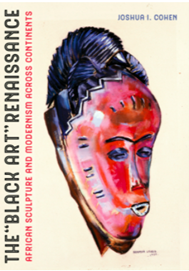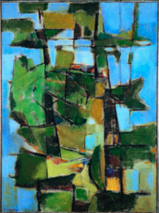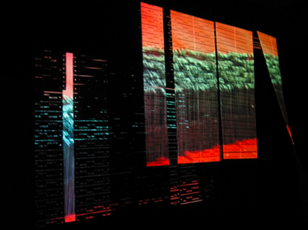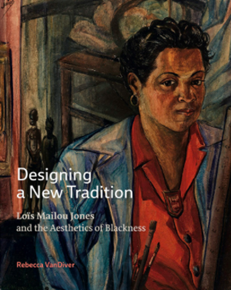CAA News Today
Women’s History Month and Art Journal Open
posted by CAA — Mar 21, 2022
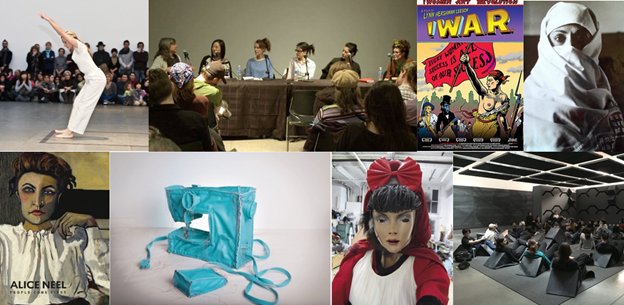
Each week this Women’s History Month, we highlight the rich scholarship and programs produced at CAA that celebrate women in the fields of visual arts and the humanities. This week, we are sharing a bibliography of articles from our open-access journal Art Journal Open that feature women artists.
This Women’s History Month is also especially significant this year, which is the 50th anniversary of feminism at CAA. To learn more about this history, visit this page. CAA is also collecting archival materials to better understand and document the history of its Committee of Women in the Arts, including the committee’s many collaborations with other affiliate committees and groups, such as the Women’s Caucus for Art, The Feminist Art Project, the Queer Caucus, and many more. Visit this page for more information.
 |
Andrew, Nell. “DadaDance: Sophie Taueber’s Visceral Abstraction.” Art Journal Open (July 3, 2014).
Sophie Taueber-Arp, Free Vertical-Horizontal Rhythms (Rythmes verticaux-horizontaux libres), 1919, gouache, 11 15⁄16 x 8 9⁄16 in. (30.3 x 21.8 cm). Stiftung Hans Arp und Sophie Taeuber Arp e.V., inv. 003.205 (artwork in the public domain; photograph provided by Stiftung Hans Arp und Sophie Taeuber Arp) |
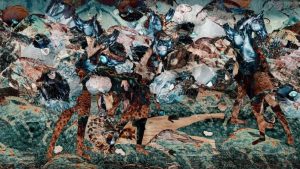 |
Barakeh, Zeina. “Projections for the Third Half [Cloud Storm].” Art Journal Open (August 6, 2020).
Zeina Barakeh, Projections From The Third Half [Cloud Storm], 2020, animation, 3 min. (artwork © Zeina Barakeh) |
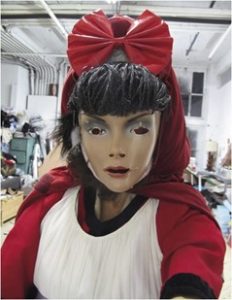 |
Barber, Tiffany E. “Narcissister, a Truly Kinky Artist.” Art Journal Open (March 11, 2020).
Narcissister, Red Riding Hood, 2014, mixed media (photograph provided by the artist) |
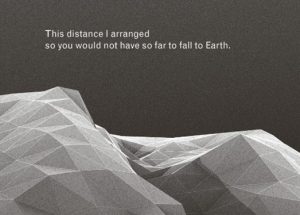 |
Berrigan, Caitlin and Sasha Engelmann. “Fault Lines and Fractures: A Conversation about Imaginary Explosions.” Art Journal Open (December 17, 2020).
Caitlin Berrigan, excerpt from Imaginary Explosions, 2018 |
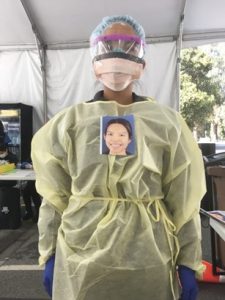 |
Bryan-Wilson, Julia and Mary Beth Heffernan. “Facing Social Practice: Mary Beth Heffernan in conversation with Julia Bryan-Wilson.” Art Journal Open (June 30, 2020).
Stanford Express Care nurse Anna Chico, who was among the first providers to use PPE Portraits for COVID-19 care, March 2020 (photograph by Cati Brown-Johnson) |
 |
Burns, A.K. and Melissa Ragain. “Scripting A Smeary Spot.” Art Journal Open (December 8, 2017).
The late Jack Doroshow performs as Mother Flawless, a clairvoyant psyche. In this scene she recites an excerpt from Joanna Russ’ sci-fi novel We Who Are About To. . . , A.K. Burns, video still from A Smeary Spot, 2015, four-channel video installation, HD color, six-channel sound, TRT 53:13 (artwork © A.K. Burns; image provided by the artist, Callicoon Fine Arts, NY, and Michel Rein Gallery, Paris/Brussels) |
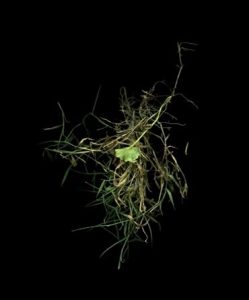 |
Cancelmo, Amy. “Roots and Ramble Kija Lucas and Amy Cancelmo in Conversation.” Art Journal Open (August 30, 2016).
Kija Lucas, Bristol 30, 2013, archival pigment print, 20 x 24 in. (50.8 x 60.9 cm), from In Search of Home, (artwork © Kija Lucas) |
 |
Carland, Tammy Rae and Ann Cvetkovich. “Sharing an Archive of Feelings: A Conversation.” Art Journal Open (October 24, 2013).
Tammy Rae Carland, Galz Living Room, MWMF, from Outpost, 2004, color photograph, 20 x 24 in. (50.8 x 61cm) (artwork © Tammy Rae Carland) |
 |
Costello, Kate. “P&P .” Art Journal Open (November 3, 2016).
Still from Kate Costello, P&P, 2016, video, 1 min., 26 sec. (artwork © Kate Costello) |
 |
Craycroft, Anna. “To Listen.” Art Journal Open (October 25, 2017).
Sophomore Seminar with Meg Cranston and Marlena Donohue, April 5, 2017: Meg Cranston and Marlena Donohue’s class met with Anna Craycroft to discuss Tuning the Room in relation to Umberto Eco’s essay “The Open Work.” (artwork © Anna Craycroft) |
 |
Craycroft, Anna. “To Record, to Interpret, to Comment.” Art Journal Open (March 1, 2017).
Anna Craycroft, The Earth Is a Magnet, 2016, installation view, part of The Artist’s Museum, Institute of Contemporary Art Boston, November 16, 2016–March 26, 2017 (artwork © Anna Craycroft; photograph by Charles Mayer) |
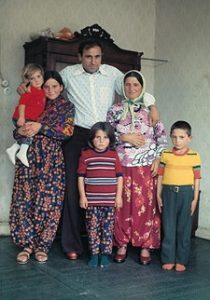 |
DaPonte, Amy A. “Candida Höfer’s Turken in Deutschland as ‘Counter-publicity’.” Art Journal Open (January 6, 2017).
Candida Höfer, Untitled from Türken in Deutschland 1979, 1979, color slide projection, 80 slides, approx. 7 min., dimensions variable (artwork © Candida Höfer, Köln/VG Bild-Kunst, Bonn 2016) |
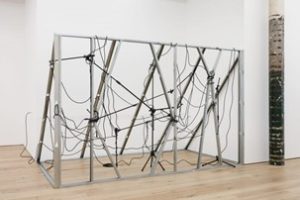 |
Fuenmayor, Jesús. “Barricades of Silence: Nikita Gale in Conversation with Jesús Fuenmayor.” Art Journal Open (August 20, 2020).
Nikita Gale, INTERCEPTOR, 2019, installation view, Fall Apart: Nikita Gale & Pat O’Neill, Martos Gallery, New York, January 11–February 24, 2019 (artwork © Nikita Gale; photograph by Charles Benton/Martos Gallery, provided by the artist) |
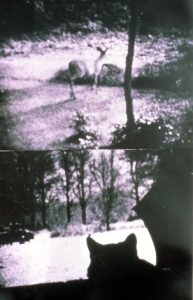 |
Goodeve, Thyrza Nichols. “The Cat is My Medium: Notes on Writing and Art of Carloee Schneemann.” Art Journal Open (July 29, 2015).
Carolee Schneemann, Kitch’s Last Meal, 1973–76, Super 8mm film, double projection, vertical, sound on cassette, ca. 5 hrs., two installation views (artwork © Carolee Schneemann; photographs provided by the artist) |
 |
Goulish, Matthew. “A Clear Day and No Memories: Neurology, Philosophy, and Analogy in Kerry Tribe’s HM.” Art Journal Open (February 5, 2014).
Eadward Muybridge, Pi-Wi-Ack, Valley of the Yosemite (Shower of Stars), “Vernal Fall,” 400 Feet Fall, No. 29, 1872, wet-plate collodion photograph (photograph in the public domain) |
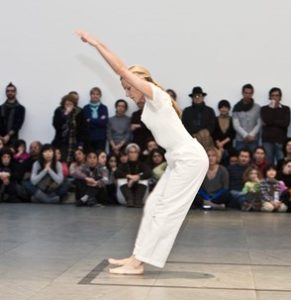 |
Graham, Amanda Jane. “Space Travels: Trisha Brown’s Locus.” Art Journal Open (July 22, 2016).
Trisha Brown, Locus Solo, 2011, performed by Diane Madden in “Performance 11: OnLine/Trisha Brown Dance Company” in conjunction with the exhibition On Line: Drawing through the Twentieth Century, Museum of Modern Art, New York, January 2011 (photographs © Yi-Chun Wu; photographs provided by Museum of Modern Art/Licensed by SCALA/Art Resource, NY) |
 |
Jenkinson, Monique. “Diva Maw.” Art Journal Open (October 29, 2020).
Monique Jenkinson (Fauxnique), Diva Maw, 2020, digital video, 5:35 min.; soundtrack by Marc Kate, Untitled (“Diva Maw” Soundtrack), 2020, audio file (video © Monique Jenkinson; soundtrack © Marc Kate) |
 |
Kauffman, Vanessa. “Outside of Time: Patricia Fernández Carcedo in Conversation with Vanessa Kauffman.” Art Journal Open (August 12, 2016).
Visitors in Patricia Fernández Carcedo’s studio during Headlands’ Fall 2015 Open House (artwork © Patricia Fernández Carcedo; photograph by Rebecca Puretz, provided by Headlands Center for the Arts) |
 |
Laser, Liz Magic and Christopher Y. Lew. “InterAct: a reenacted interview.” Art Journal Open (May 4, 2011)
Liz Magic Laser, Flight, 2010, performance, MoMA PS1, Long Island City, April 10, 2010 (artwork © Liz Magic Laser; photograph by Mia Tramz, provided by Derek Eller Gallery). The performance was developed in collaboration with actors Lindsey Andersen, Nic Grelli, Elizabeth Hodur, Michael Wiener, Max Woertendyke, and Lia Woertendyke |
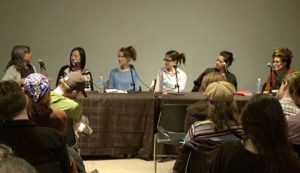 |
Lee, Young Jean. “Women in Downtown Theater.” Art Journal Open (August 26, 2012). |
 |
Leeson, Lynn Hershman. “Excerpts from the Graphic Novel !Women Art Revolution—A Secret History.” Art Journal Open (May 29, 2011) |
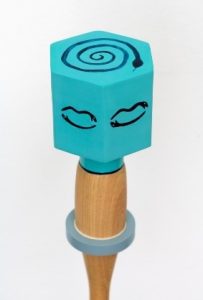 |
Mann, Elana. “One day I will make a mace, but for now I have a mouth.” Art Journal Open (September 30, 2021).
Elana Mann, Unidentified Bright Object #61, 2021, clay, wood, and glass, 14 ½ x 3 ½ x 3 ¾ in. (36.8 x 8.9 x 9.5 cm) (artwork © Elana Mann; photographs by Brica Wilcox) |
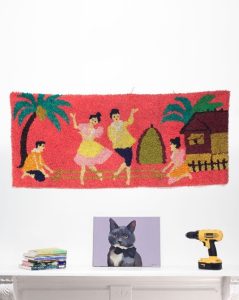 |
Masley-Charlet, Caitlin. “Caitlin Masley-Charlet in Conversation with Elisabeth Smolarz.” Art Journal Open (June 5, 2018).
Elisabeth Smolarz, ENCYCLOPEDIA OF THINGS, ongoing 2014–2017. Archival inkjet prints, dimensions variable. Courtesy of the artist. |
 |
Masley-Charlet, Caitlin. “Caitlin Masley-Charlet and Diana Shpungin in Conversation.” Art Journal Open (July 8, 2016).
Diana Shpungin, detail of A Break in One and Several Places, 2015, graphite pencil, horsehair broom, glazed porcelain and stoneware, 24 x 43 x 14 in. (60.9 x 109.2 x 35.5 cm) (artwork © Diana Shpungin) |
 |
McKee, C.C. “‘a salting of sorts’: Salt, Sea, and Affective Form in the work of Deborah Jack.” Art Journal Open (July 30, 2019).
Deborah Jack, SHORE, 2004, nylon screens, video projection, rock salt, reflecting pool, dimensions variable, installation view, Big Orbit Gallery, Buffalo, New York (artwork © Deborah Jack; photograph provided by the artist) |
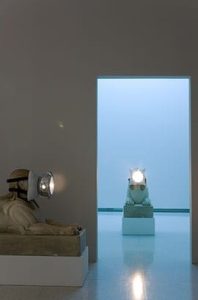 |
McClure, Michael Jay. “If it Need Be Termed Surrender: Trisha Donnelly’s Subjunctive Case.” Art Journal Open (July 29, 2013).
Trisha Donnelly, Untitled, 2008, plaster, horsehair, paint, pillow, belts, lamp, two parts, ea. 36 x 60 x 22¾ in. (91.4 x 152.4 x 57.8 cm), installation view, The Quick and the Dead, Walker Art Center, 2009 (artwork © Trisha Donnelly; photograph provided by Casey Kaplan, New York) |
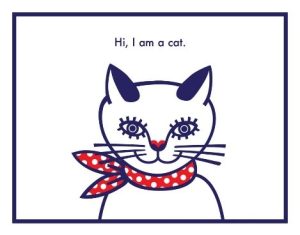 |
Ohsawa, Asuka. “Squares, Triangles, and Cats.” Art Journal Open (December 31, 2020). |
 |
Porges, Maria. “Shortest Stories.” Art Journal Open (December 20, 2018). |
 |
Rosa, María Laura. “Questions of Identity: Photographic Series by Alicia D’Amico, 1983–86.” Art Journal Open (July 2, 2019).
Alicia D’Amico photograph of Liliana, a performance by Liliana Mizrahi, 1983, scanned copy of original negative, reproduction from original 35mm negative contact (photograph © Archivo Alicia D’Amico, Buenos Aires) |
 |
Santos, Dorothy R. “ Domain Errors.” Art Journal Open (July 24, 2020). |
 |
Schiff, Karen L. “Imprinting Agnes Martin.” Art Journal Open (December 19, 2014).
Karen L. Schiff, Agnes Martin, El País, 21 December 2004, II, 2005, graphite and stylus on vellum, 17 x 12 inches (artwork © Karen L. Schiff) |
 |
Sifuentes, Aram Han. “Official Unofficial Voting Station: Voting for All Who Legally Can’t.” Art Journal Open (October 1, 2020).
Protest Banner Lending Library, Let Us Vote! and Official Unofficial Voting Station, 2020, textile banners (photograph by Thaib A. Wahab) |
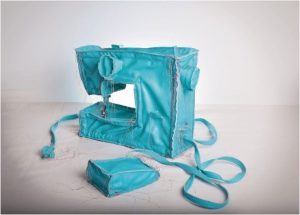 |
Szymanek, Angelique. “Haptic Encounters: Margarita Cabera’s Space in Between.” Art Journal Open (October 15, 2020).
Margarita Cabrera, Sewing Machine (Blue-Green), 2016, vinyl, thread, copper wire, and appliance parts (artwork © 2020 Margarita Cabrera/Licensed by VAGA at Artists Rights Society [ARS], NY; photograph provided by the artist) |
 |
Vlassopoulou, Penelope. “No water, Athens, Greece, 2015: Twenty-four hours with nothing to eat or drink, only smelling the jasmine.” Art Journal Open (October 26, 2016).
Excerpt from Pandelis Prevelakis, I Kefali tis Medousas [The Head of Medusa] (Athens: Friends’ Editions, 1963), trans. the artist and Markus Nystrom |
 |
Watt, Marie. “In Conversation with Marie Watt: A New Coyote Tale.” Art Journal Open (October 19, 2017).
Marie Watt, Blanket Stories: Transportation Object, Generous Ones, Trek, 2014, cast bronze, 18 x 4 x 6 ft. (5.49 x 1.22 x 1.83 m). Permanent installation, Tacoma Art Museum, Tacoma, Washington (artwork © Marie Watt; photograph by Benjamin Benschneider/OTTO) |
 |
Wilson, Siona. “Portraits (and) Matter.” Art Journal Open (January 13, 2022). |
 |
Yoshitake, Mika. “Humans have been Human for so long: Shana Lutker and Mika Yoshitake in Conversation.” Art Journal Open (August 2, 2016).
Shana Lutker, A handsome confused puppet, 2015, mirrored glass box, fluorescent lights, wood, marble, casters, 49 x 30 x 19 in. (124.4 x 76.2 x 48.2 cm) (artwork © Shana Lutker; photograph by Cathy Carver) |
 |
Yurshansky, Jenny. “Hide and Seek.” Art Journal Open (March 25, 2021).
Jenny Yurshansky, Hide and Seek (folded view), 2021, interactive sculpture, inkjet print, 3 3/4 x 3 3/4 x 3 in. (9.5 x 9.5 x 7.6 cm) (photograph provided by the artist) Folk tradition meets revisionist storytelling in Jenny Yurshansky’s printable sculpture |
Announcing New CAA Board Members for 2022!
posted by CAA — Mar 08, 2022
The results of the 2022 CAA Board of Directors Election were presented at the CAA Annual Business Meeting, Part II on Friday, February 18 at 2:00 p.m. (CST) at CAA’s 110th Annual Conference.
We are grateful to all the candidates who put forward their names for consideration this year.
ABOUT THE BOARD OF DIRECTORS
The Board of Directors is charged with CAA’s long-term financial stability and strategic direction; it is also the Association’s governing body. The board sets policy regarding all aspects of CAA’s activities, including publishing, the Annual Conference, awards and fellowships, advocacy, and committee procedures.
Thank you to all those who voted!
We would like to congratulate Gregory Gilbert, Nazar Kozak, Karen J. Leader, Adity Saxena, and Victoria McCraven on their election to CAA’s Board of Directors.
Gregory Gilbert
 Gregory Gilbert received his BFA degree in Art History from the University of Kansas and his MA and PhD degrees in Art History from Rutgers University. He has taught at Rutgers University, Purdue University and Western Illinois University. He is currently Professor of Art History and Director of the Art History and Art Museum Studies programs at Knox College in Galesburg, Illinois. He also earned MA certification in Museum Studies from Rutgers University and has worked in several art museums, most recently as senior curator at the Figge Art Museum in Davenport, Iowa. His primary area of research is 20th century American art, specifically Abstract Expressionism. He is currently researching the relationship of Robert Motherwell’s art to Pragmatist philosophy and American poetics and in 2015 received a Dedalus Foundation Visiting Scholar at the Archives of American Art Fellowship for this project. He is also writing a book on Abstract Expressionism and the mass visual culture of World War II and has published articles in the Oxford Art Journal and Arts on this topic. In addition, he has written critical exhibition and book reviews for The Art Newspaper.
Gregory Gilbert received his BFA degree in Art History from the University of Kansas and his MA and PhD degrees in Art History from Rutgers University. He has taught at Rutgers University, Purdue University and Western Illinois University. He is currently Professor of Art History and Director of the Art History and Art Museum Studies programs at Knox College in Galesburg, Illinois. He also earned MA certification in Museum Studies from Rutgers University and has worked in several art museums, most recently as senior curator at the Figge Art Museum in Davenport, Iowa. His primary area of research is 20th century American art, specifically Abstract Expressionism. He is currently researching the relationship of Robert Motherwell’s art to Pragmatist philosophy and American poetics and in 2015 received a Dedalus Foundation Visiting Scholar at the Archives of American Art Fellowship for this project. He is also writing a book on Abstract Expressionism and the mass visual culture of World War II and has published articles in the Oxford Art Journal and Arts on this topic. In addition, he has written critical exhibition and book reviews for The Art Newspaper.
Nazar Kozak
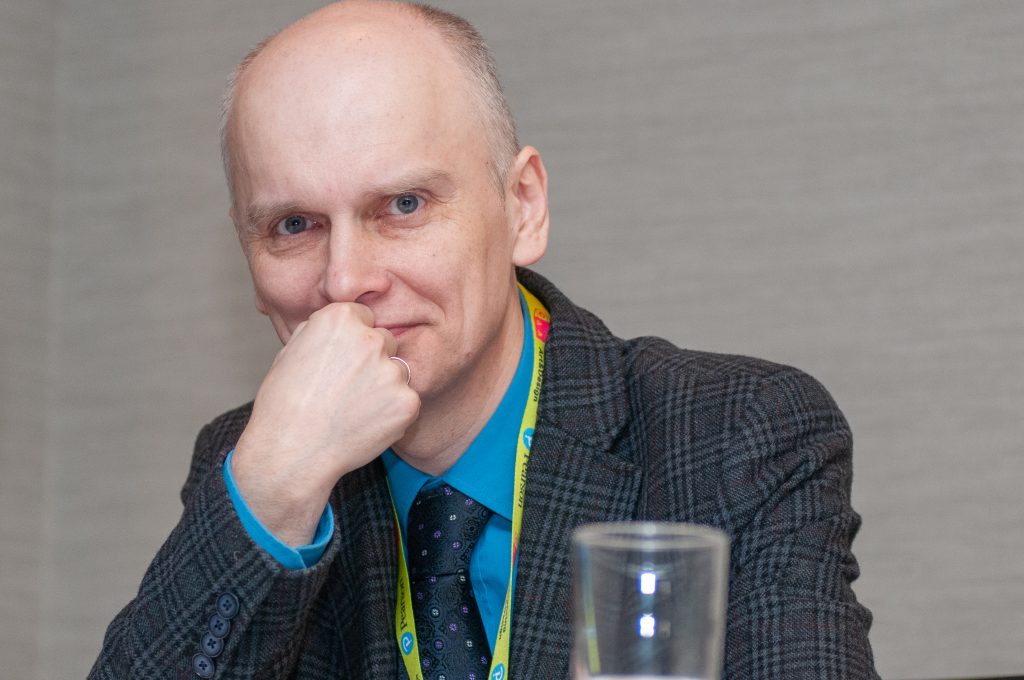 Nazar Kozak is Senior Researcher at the Department of Art Studies at the Ethnology Institute of the National Academy of Sciences, Ukraine and Associate Professor of Art History at Ivan Franko University of Lviv. Kozak received a PhD from Lviv Academy of Arts in 2000. His research was supported by scholarships and grants from the Fulbright Scholar Program, Getty Scholar Program, the American Council of Learned Societies, and other organizations. Kozak is working in two subfields of art history simultaneously: medieval and contemporary. His research on the medieval period concerns political iconography and art exchanges in Byzantine and post-Byzantine cultural spheres. He has authored the book (Lviv: Liha-Pres, 2007). In contemporary art studies, Kozak is exploring art’s agency in crisis situations. His essay on the art interventions during the Maidan Revolution in Ukraine (2013–14) received an honorable mention as a finalist for 2018 Art Journal Award. Currently, Kozak is writing a book about global artistic responses to the 1986 Chernobyl nuclear disaster.
Nazar Kozak is Senior Researcher at the Department of Art Studies at the Ethnology Institute of the National Academy of Sciences, Ukraine and Associate Professor of Art History at Ivan Franko University of Lviv. Kozak received a PhD from Lviv Academy of Arts in 2000. His research was supported by scholarships and grants from the Fulbright Scholar Program, Getty Scholar Program, the American Council of Learned Societies, and other organizations. Kozak is working in two subfields of art history simultaneously: medieval and contemporary. His research on the medieval period concerns political iconography and art exchanges in Byzantine and post-Byzantine cultural spheres. He has authored the book (Lviv: Liha-Pres, 2007). In contemporary art studies, Kozak is exploring art’s agency in crisis situations. His essay on the art interventions during the Maidan Revolution in Ukraine (2013–14) received an honorable mention as a finalist for 2018 Art Journal Award. Currently, Kozak is writing a book about global artistic responses to the 1986 Chernobyl nuclear disaster.
Karen J. Leader
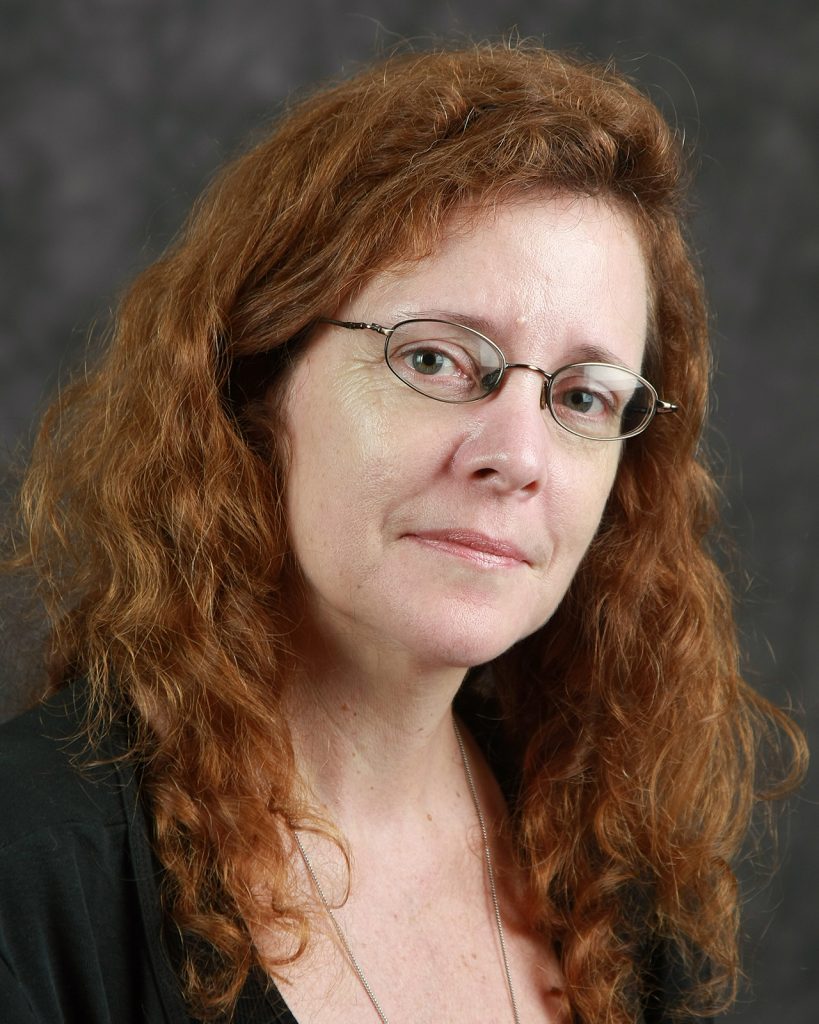 Karen J. Leader is Associate Professor of Art History and Faculty Associate in the Center for Women, Gender and Sexuality Studies at Florida Atlantic University. She received her BA from the University of California, Berkeley and her MA and Ph.D. at the Institute of Fine Arts, New York University. Her areas of interest include art and popular culture in the 19th-21st centuries, feminist theory and practice, and the history and future of the discipline of art history, the humanities, and higher education. She has published on the artist Gustave Courbet, representations of women in popular culture, and 21st-century tattoo culture. She directs the Barb Schmidt Fellowship: Cultivating Community Involvement, Advocacy and Social Change, and is currently the chair of CAA’s Services to Historians of the Visual Arts Committee.
Karen J. Leader is Associate Professor of Art History and Faculty Associate in the Center for Women, Gender and Sexuality Studies at Florida Atlantic University. She received her BA from the University of California, Berkeley and her MA and Ph.D. at the Institute of Fine Arts, New York University. Her areas of interest include art and popular culture in the 19th-21st centuries, feminist theory and practice, and the history and future of the discipline of art history, the humanities, and higher education. She has published on the artist Gustave Courbet, representations of women in popular culture, and 21st-century tattoo culture. She directs the Barb Schmidt Fellowship: Cultivating Community Involvement, Advocacy and Social Change, and is currently the chair of CAA’s Services to Historians of the Visual Arts Committee.
Victoria McCraven
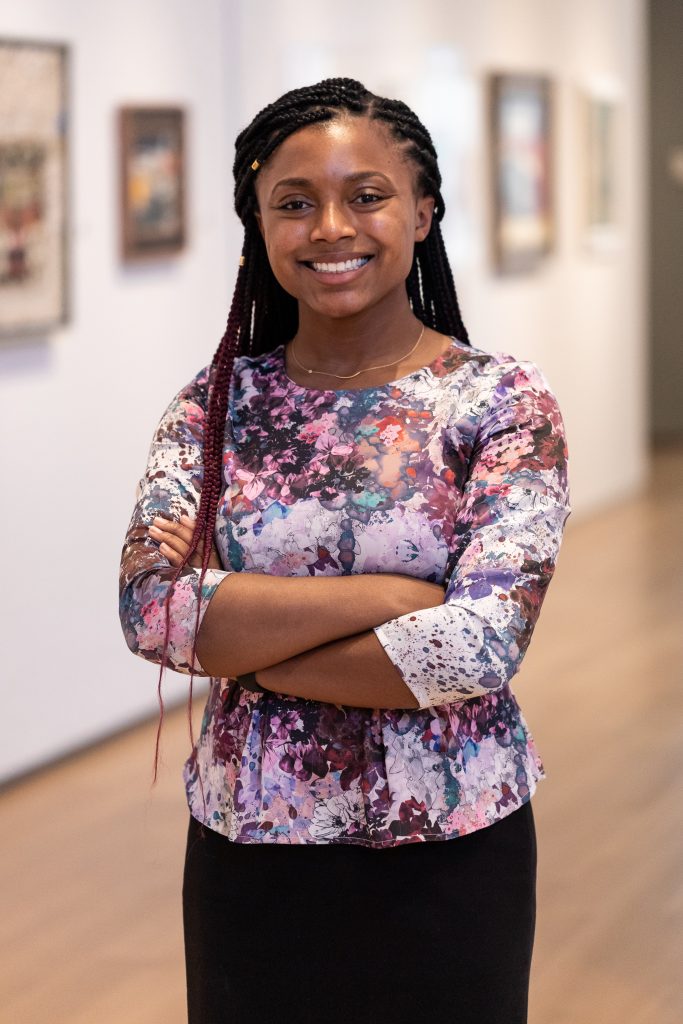 Victoria McCraven is the Programs Manager at NXTHVN, where she recently co-curated the Fall Exhibition Christian Curiel: Between Reveries. Based in New Haven, Connecticut, NXTHVN is an arts non-profit which invites emerging artists from all over the world to participate in its curatorial and studio fellowships. She is passionate about expanding historical narratives through the visual arts and creating community-based dialogue. Victoria earned her bachelor’s degree from Dartmouth College, majoring in Geography with a minor in Art History. While at Dartmouth, she worked at the Hood Museum of Art where she curated the exhibition Black Bodies on the Cross which included works by Romare Bearden, Kara Walker, and Ashley Bryan. In 2019, Victoria was selected as a U.S.-U.K. Fulbright Postgraduate Grantee to complete her master’s degree in History of Art at the School of Oriental and African Studies, University of London. Previously, Victoria was the 2020-2021 Romare Bearden Graduate Museum Fellow at the Saint Louis Art Museum, where she worked on education and audience development projects across the museum. While completing her fellowship at the Saint Louis Art Museum, she co-curated the current New Media Series Nuotama Frances Bodomo: Afronauts which is currently on view through May 1, 2022.
Victoria McCraven is the Programs Manager at NXTHVN, where she recently co-curated the Fall Exhibition Christian Curiel: Between Reveries. Based in New Haven, Connecticut, NXTHVN is an arts non-profit which invites emerging artists from all over the world to participate in its curatorial and studio fellowships. She is passionate about expanding historical narratives through the visual arts and creating community-based dialogue. Victoria earned her bachelor’s degree from Dartmouth College, majoring in Geography with a minor in Art History. While at Dartmouth, she worked at the Hood Museum of Art where she curated the exhibition Black Bodies on the Cross which included works by Romare Bearden, Kara Walker, and Ashley Bryan. In 2019, Victoria was selected as a U.S.-U.K. Fulbright Postgraduate Grantee to complete her master’s degree in History of Art at the School of Oriental and African Studies, University of London. Previously, Victoria was the 2020-2021 Romare Bearden Graduate Museum Fellow at the Saint Louis Art Museum, where she worked on education and audience development projects across the museum. While completing her fellowship at the Saint Louis Art Museum, she co-curated the current New Media Series Nuotama Frances Bodomo: Afronauts which is currently on view through May 1, 2022.
Adity Saxena
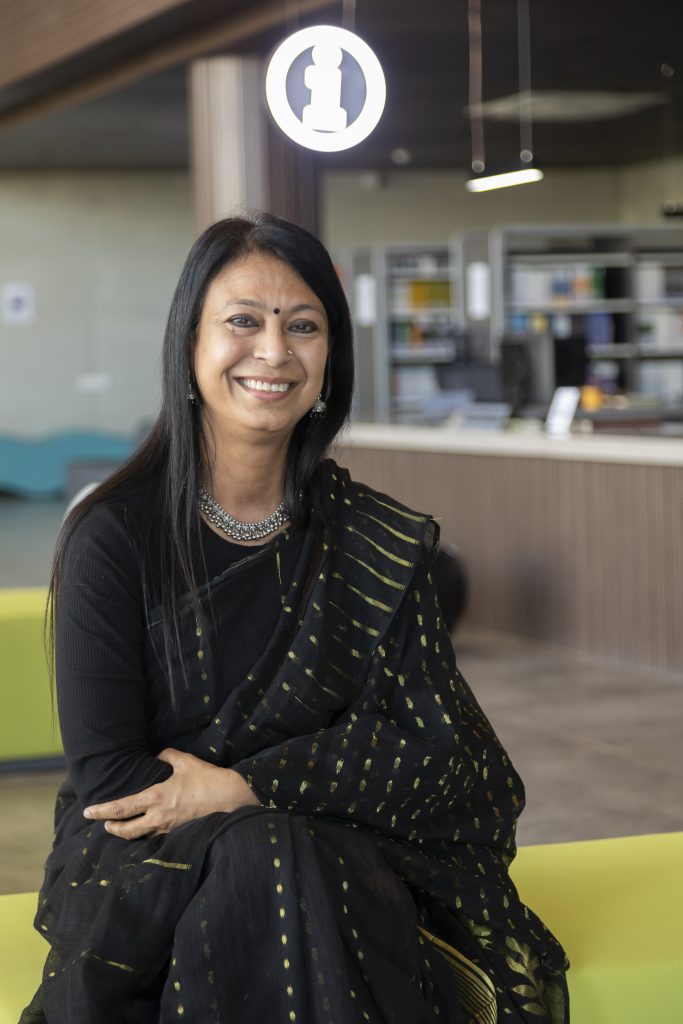
I call myself a messenger of happiness and believe in empathy. Mind-map is my tool for plotting ideas and communicating through stories. In the past 18 years of my professional journey, I have progressed from a design educator of a vocational training institution to a Dean of the Woxsen School of Arts and Design, India. In addition, I have expanded my path from teaching to academic coordination to academic leadership.
Being a first-generation graduate, I have many pauses, slow and fast pace in my journey path, which gives me an understanding of people, culture, and power of empathy. I am a teenage girl’s mother, a certified design thinker, and a mentor.
My experience includes allied fields like working as a Restorative Justice co-facilitator in a school project in the United States and many global research projects. I am India representative of Restorative Justice Education, USA, a nonprofit, 501(c)(3) corporation) is to promotes the practice of Restorative in school education to create a culture of care.
The social role of art, wellbeing and education are the areas that interest me more. My research has been published globally and many of my research are the outcome of global collaborations. I have been invited to share my thoughts about the challenges in online education, corporate storytelling, and design thinking on many international platforms.
I have been featured in The Academic Woman Magazine, the UK, in Jan-March, 2022 issue. In addition, recently, I have been invited to work as an external member in Design Thinking for Social Change, a project funded by the European Union.
I am privileged to be connected with a global network and believe in the power of collaborations. My dream is to create an enjoyable learning space for students and teachers.
Meet the 2021 Professional Development Fellows
posted by CAA — Feb 18, 2022
CAA is pleased to announce the recipients of the 2021 Professional Development Fellowships. The recipient of the $10,000 fellowship in visual arts is Christine Lee, California Institute of the Arts and the recipient of the $10,000 fellowship in art history is Jenny Tang, Yale University. An honorable mention in visual arts goes to Malene Barnett, Temple University and an honorable mention in art history goes to Maia Nichols, University of California, San Diego. All fellows and honorable mentions receive a complimentary one-year CAA membership and registration for the 2022 Annual Conference.
2021 PROFESSIONAL DEVELOPMENT FELLOWSHIP IN VISUAL ARTS
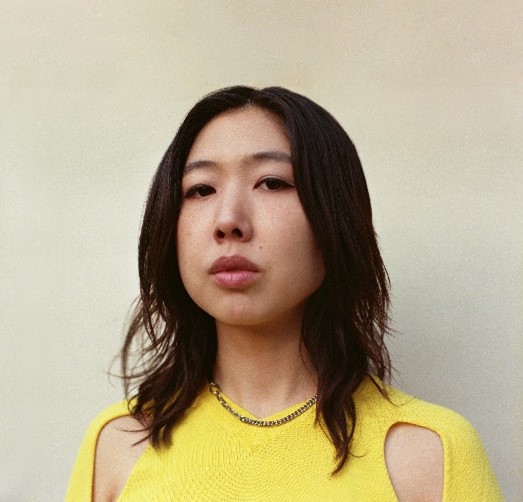
Christine Lee, California Institute of the Arts
Christine Yerie Lee is a visual artist primarily working in video, installation and sculpture. Raised in the American South by immigrant parents from South Korea, her practice explores performativity and identity-formation, often using the body to articulate ideas concerning resistance to hegemonic power structures in hopes to create a future yet to be imagined or narrativized. By engaging with folklore, history, and pop culture, her work addresses personal and collective memory, hybridity, and authenticity. Her material explorations reflect the poetics informed by these notions and are often activated in her digital works. Through intersectional inquiry and worldbuilding, she aims to illuminate the distinct and parallel threads of the human experience to provide pathways for connection. Lee received a BFA in Apparel Design from Rhode Island School of Design in 2010 and worked as a fashion designer for a decade prior to graduate school. She currently resides in Los Angeles and will complete her MFA in Art at California Institute of the Arts in May 2021.
HONORABLE MENTION IN VISUAL ARTS
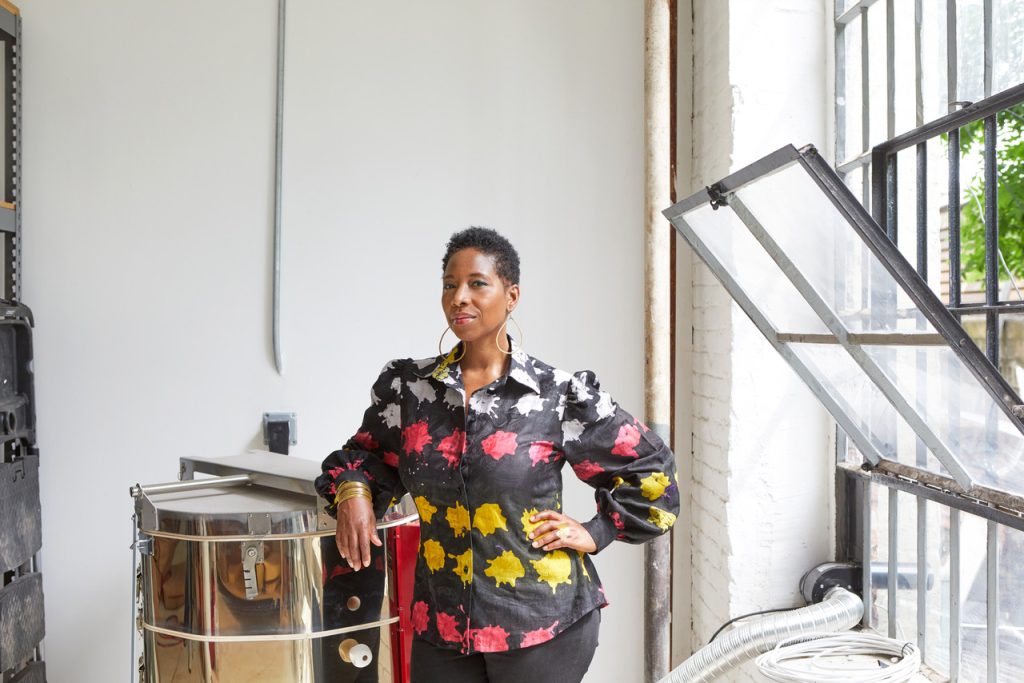
Malene Barnett, Temple University
Malene Barnett is a multi-disciplinary artist, entrepreneur, and authority on the cultural traditions and practices of art in the African diaspora and how it translates into her vision of the modern black experience. From her sculptural ceramic tiles and vessels to mixed media paintings to handwoven rugs, Barnett continues to evolve her craft and share her African heritage with a global audience. Using archival materials like glass, fiber and clay, she uncovers a deeper language of her legacy and an authentic understanding of her cultural identity. A passionate connector and expert ambassador, her mission is to use art as a tool to create community impact and open doors for the next generation of black artists and expand the conversation around marginalization in the arts and create greater opportunities for inclusion.
As the founder of the Black Artists + Designers Guild, a global platform and curated collective of independent black makers, she constantly seeks new ways to define the Black narrative and experience for a new generation while bringing awareness to inequality. Her work has been praised in Interior Design Magazine, New York Magazine, Traditional Home, Elle Decor, HGTV Magazine, Luxe + Design Magazine, and House Beautiful. She was also on the cover of Brownstoner Magazine and Wendy Goodman’s Designer Lives video series with New York Magazine’s The Cut. Her entrepreneurial spirit was captured in the NY Times bestselling book “In the Company of Women ” and Home by Hygge & West. She has appeared as a guest speaker on Morning Joe, MSNBC Your Business, and TEDx. Malene’s works have been exhibited at Museum of Science and Industry, Dallas African American Museum, Jane Hartsook Gallery, Mindy Solomon Gallery, Baltimore Clayworks, DAAP Galleries, and The Clay Studio.
2021 PROFESSIONAL DEVELOPMENT FELLOWSHIP IN ART HISTORY
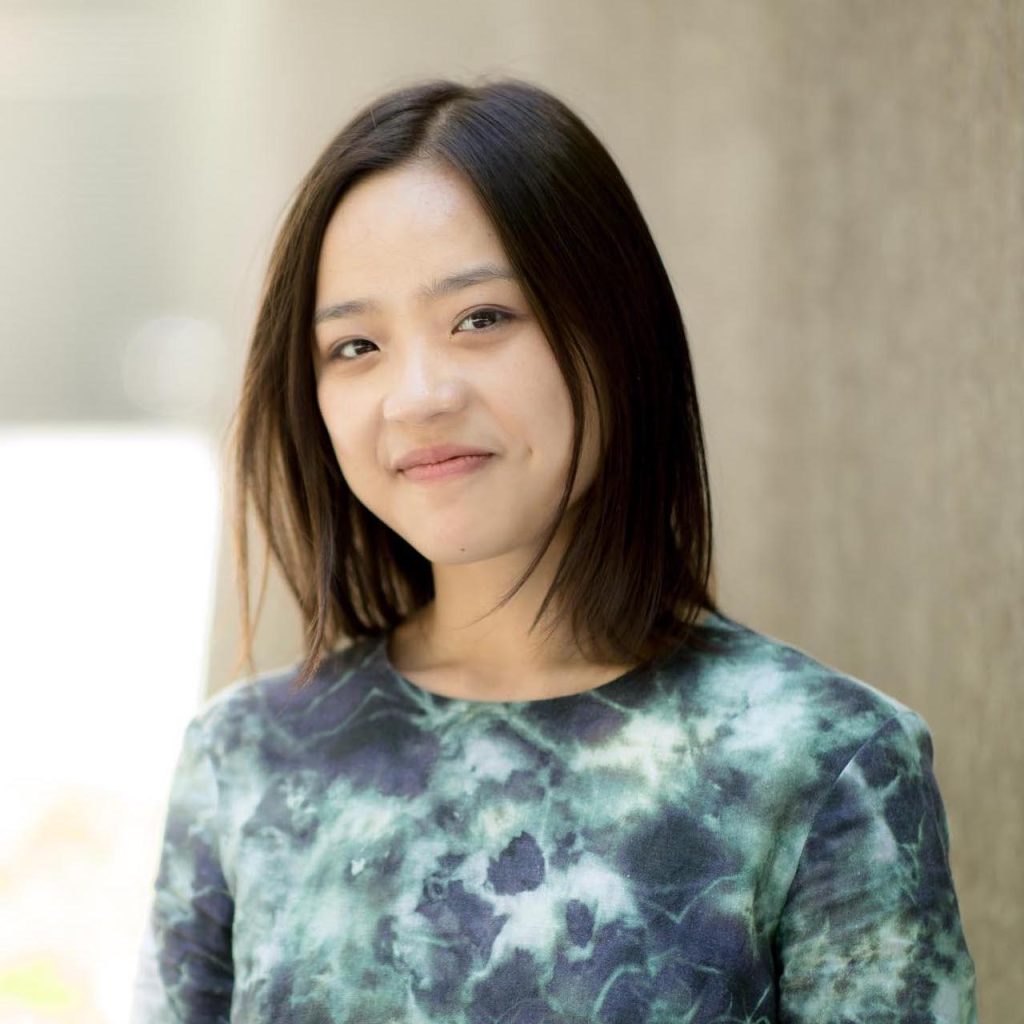
Jenny Tang is a doctoral candidate in History of Art and Film & Media Studies at Yale University, where she specializes in modern and contemporary art, media, and visual culture of the Atlantic world. Tang’s dissertation combines original archival research and a feminist postcolonial perspective to show how layered twentieth-century regimes of race and citizenship in the United States shaped modernist imaginations of the body across the Atlantic. From photomontage and abstraction to security and confinement, this work recasts the history of modernism through the lens of Asian American and African American racial formation. In addition to her scholarly practice, Tang writes criticism on the cultural politics of art, film, and music. She has also contributed to exhibitions and programs at the Studio Museum in Harlem and the Museum of Modern Art, where she was a 2020-21 Mellon-Marron Research Fellow in the Department of Painting and Sculpture. At Yale, she co-organized the group exhibition New Genealogies with photographer John Edmonds at the Yale School of Art. Tang currently teaches foundational topics in art history in the Department of Art History and the Rose Hill Honors Program at Fordham University.
HONORABLE MENTION IN ART HISTORY
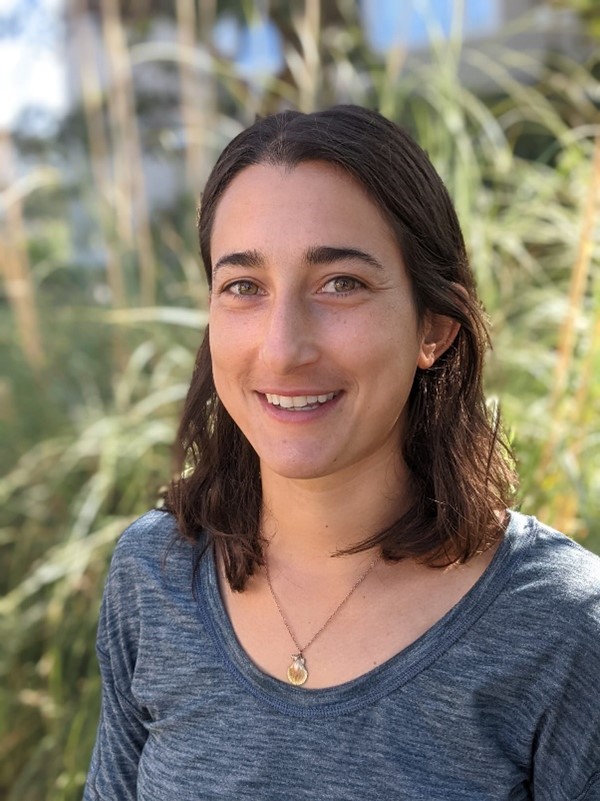
Maia Nichols, University of California, San Diego
Maia Nichols is a Lebanese American-Canadian doctoral candidate in art history, criticism and theory at University of California San Diego specializing in 20th century French and North African visual and material culture, postcolonial theory, and the history of social psychiatry. She holds degrees in psychology and visual art from the University of British Columbia in Vancouver and a masters in aesthetics and politics from the California Institute of the Arts. She additionally engages in art practice and has taught studio art drawing at UC San Diego. Her work has been exhibited internationally. Her art criticism has been published in venues such as Flash Art International, Hyperallergic, and Diagram. Her dissertation, researched in France with support from a four-year Canadian Social Sciences and Humanities Research Council Doctoral Fellowship, engages art historical visual and material culture methods and theories to consider the institutional history of French colonial North Africa’s progression to independence during the social psychiatry movement, drawing on a range of archival evidence of material culture and experience.
ABOUT THE PROFESSIONAL DEVELOPMENT FELLOWSHIP
CAA’s Professional Development Fellowship program supports promising artists and art historians who are enrolled in MFA and PhD programs nationwide. Awards are intended to help them with various aspects of their work, whether for job-search expenses or purchasing materials for the studio. CAA believes a grant of this kind, without contingencies, can best facilitate the transition between graduate studies and professional careers. The program is open to all eligible graduate students in the visual arts and art history. Applications for the 2022 fellowship cycle will be due December 15, 2022. Learn more.
Affiliated Society News: February
posted by CAA — Feb 15, 2022
Many of CAA’s affiliated societies will be presenting virtual sessions at our 110th Annual Conference from February 17-19 and from March 3-5. Check out a list of their sessions to preview!
To attend these sessions and more, make sure to register for the conference and learn more at its registration page.
AHNCA (Association of Historians of Nineteenth-Century Art)
Events
AHNCA’s Emerging Scholars Working Group Presents: See/Sip/Share: AHAA Crossover
Wednesday, February 23 at 6 p.m. EST
The Emerging Scholars Working Group of the Association of Historians of Nineteenth-Century Art will join with the Association of Historians of American Art (AHAA) to host a See/Sip/Share, a bring-your-own beverage casual discussion of two images. Register here.
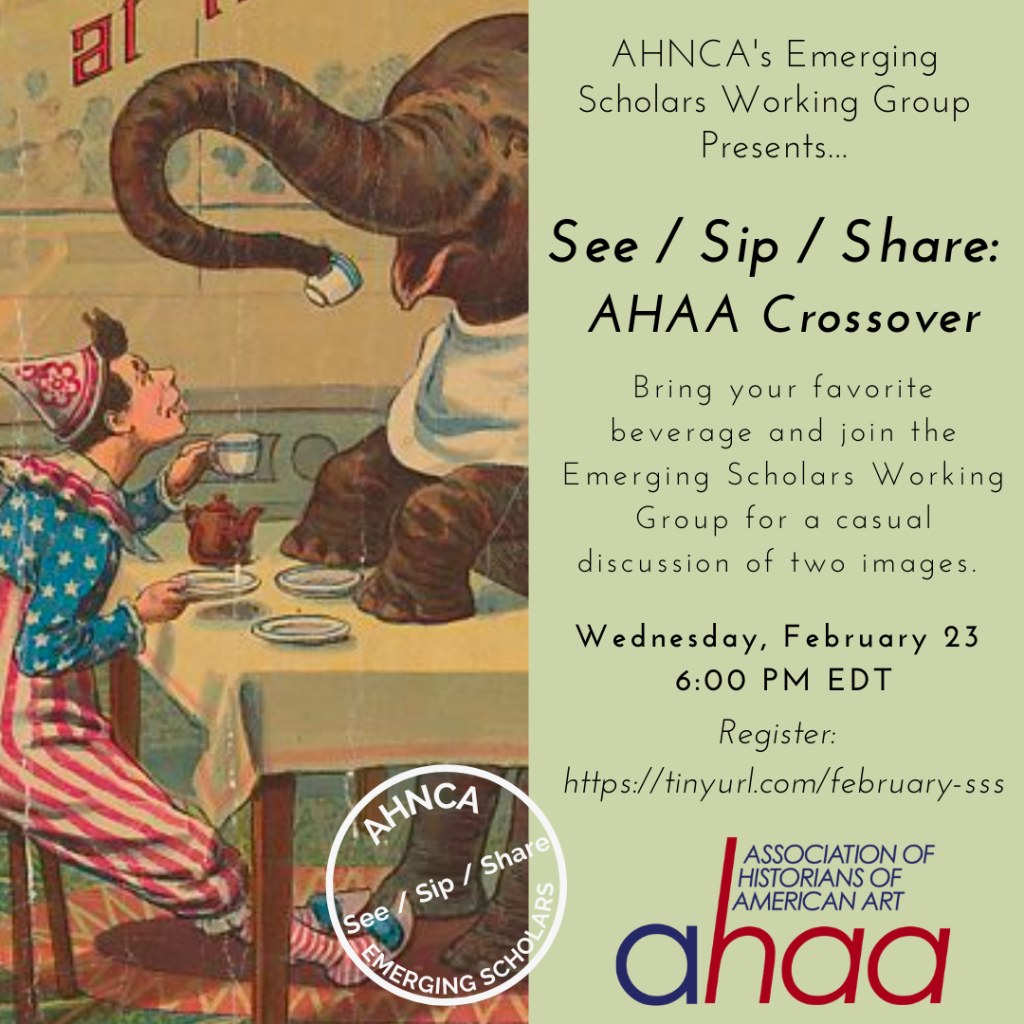
CAA Intern Spotlight
posted by CAA — Feb 10, 2022
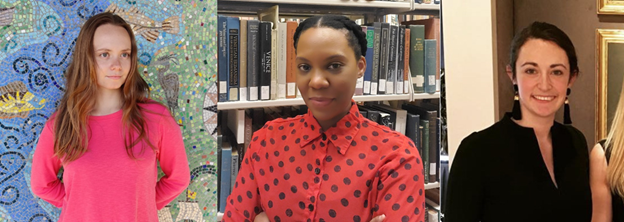
This week, CAA spotlights its three amazing interns who have been working with CAA since early fall 2021: Development Intern, Viktoriya Molchanova, Editorial Intern, Keshawna Mooney, and Grants Administration Intern, Astrid Tvetenstand. Learning to work remotely for an organization as a young professional is no small feat and we thank them for their dedication, enthusiasm, and support.
Development Intern: Viktoriya Molchanova
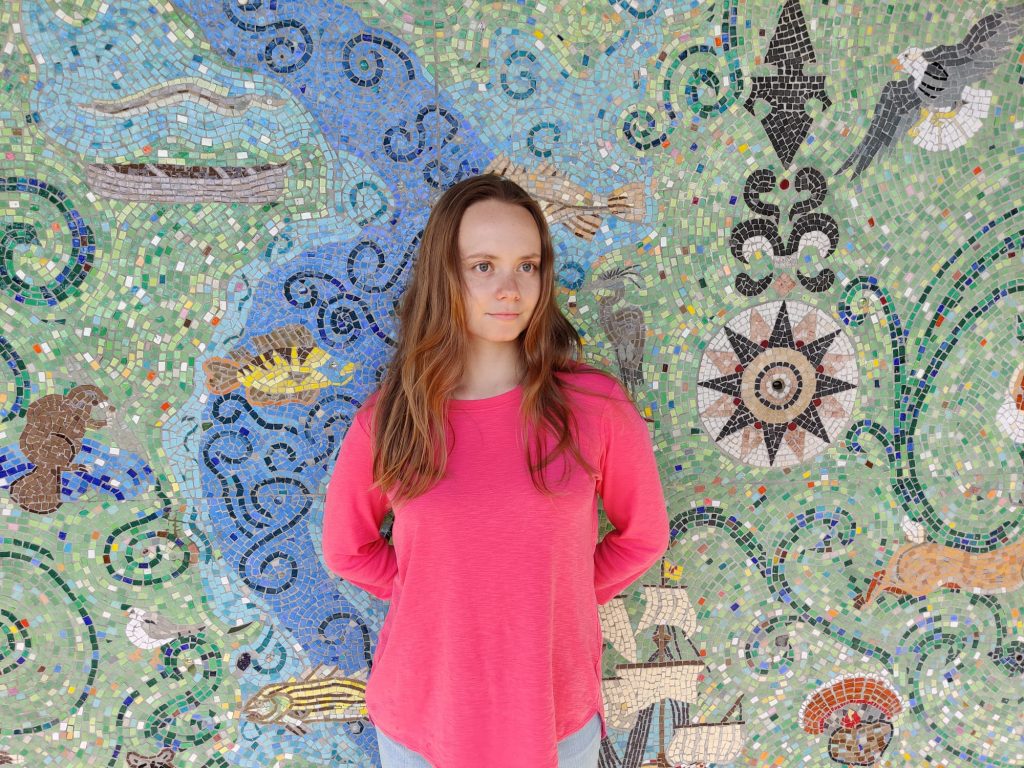
How has your experience at CAA affected you?
As a flutist with a performing arts background, I did not know much about the visual arts. As an aspiring future arts administrator, I wanted to take an internship at CAA to expand my knowledge and work experience specifically in the visual arts. Throughout these months, I have gained a deeper understanding of the visual arts world from its accomplished scholars to its dedicated funders. My great-grandfather was a visual arts scholar and attended many international visual arts conferences. I am happy to continue his legacy through my internship at CAA.
What is your favorite kind of art and why?
My favorite art is The Unicorn Rests in a Garden from the Unicorn Tapestries at the Met. The tapestry reminds me of a time when I arrived in elementary school as a first generation immigrant. It was challenging to learn the English language and assimilate into a new culture. However, the arts education at my school helped me overcome my struggles. My visual arts teacher saw that I enjoyed looking through his art book on unicorns. As a kind gesture, he gave me the book as a gift. After all these years, I still keep book as a reminder of the transformative power of arts education on my life and career.
Viktoriya Molchanova is a graduate student in the Arts Administration Master’s program at Baruch College and holds two Bachelor’s in Arts Management and Classical Instrumental Performance from Purchase College. She won the Nagelberg Family Scholarship in Arts Administration in 2021 and the SAMMIE Award for Outstanding Achievement in Arts Management in 2020. Viktoriya is in her last semester at Baruch College and is writing her Master’s thesis. Viktoriya is happy to connect on LinkedIn.
Editorial Intern: Keshawna Mooney
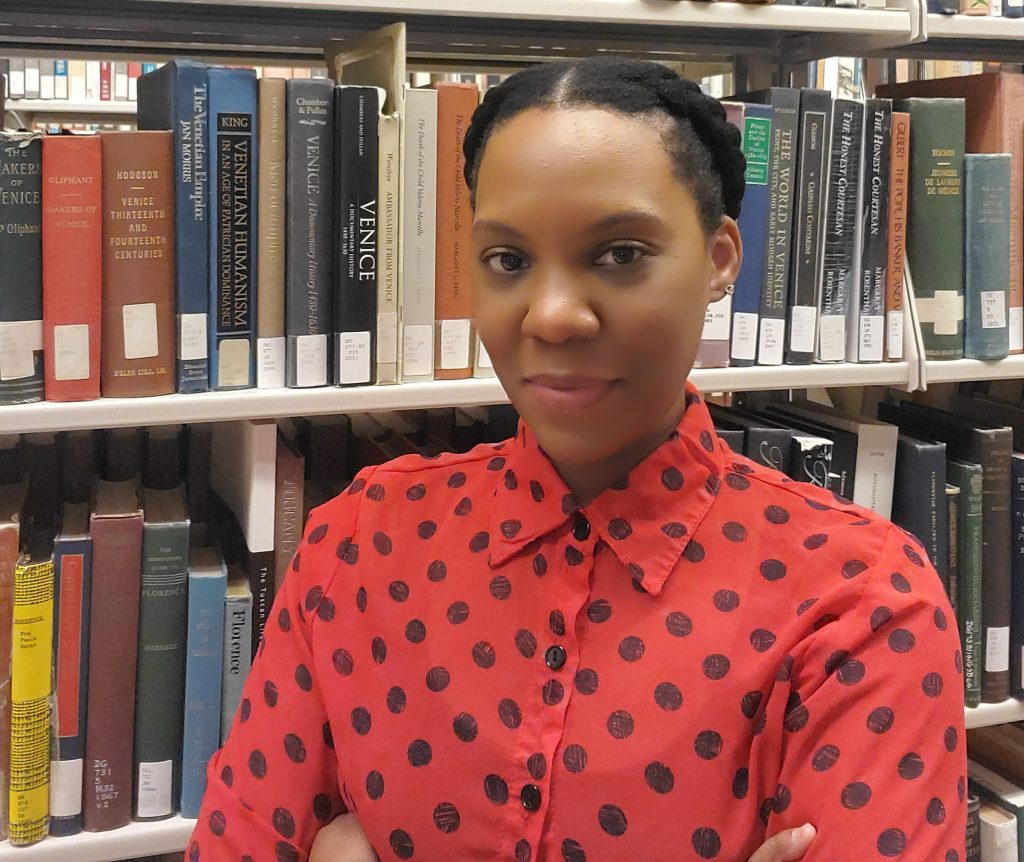
How has your experience at CAA affected you?
My internship at CAA has been an amazing experience. I have learned so much about the publishing process and become more familiar with specific style guides which were both specific goals I had for myself. It has been great to work with such an encouraging supervisor that has allowed me to advance these skills and grow as a young professional. I am also proud to have been part of the team that assists artists, scholars, and other art lovers in presenting their work and ideas to an audience.
What was something you learned that was unexpected?
I have been amazed to learn the amount of work that goes into journal publishing. Being able to work on all journals simultaneously has been exciting and learning to prioritize while juggling multiple projects has helped strengthen my time management skills even further. I have also discovered that the editing process is a much more collaborative experience as opposed to solitary, and it feels great to know that I have support and guidance when I need it.
What is your favorite kind of art and why?
While I love all forms of art, my favorite kind of visual art would be street art because you can find it almost anywhere and sometimes in the most unexpected places. In addition to its accessibility, street art takes concepts many of us recognize and positions them in ways so relatable that tells us we are seen and maybe even understood. Some of my favorite street artists include DAZE, Bambi, and WRDSMTH.
Keshawna Mooney is an Editorial Intern at CAA. She is a junior at CUNY Brooklyn College majoring in English and Creative Writing. Her goal is to present multilayered characters in their most complicated, contradictory, and raw forms. She is also a winner of the 2021 James Tolan Award for her essay “Lolita: The Unknowingly Irresponsible Girl Child.” She has worked as a supplemental instructor at BMCC working with students to develop and improve their writing skills and as an English literacy volunteer with adult populations. After graduation she hopes to be able to continue doing the work she loves, telling interesting stories and helping others tell theirs. In her spare time, you can find her wandering around art museums, enjoying theater, or curled up with a good book.
Grants Administration Intern: Astrid Tvetenstrand
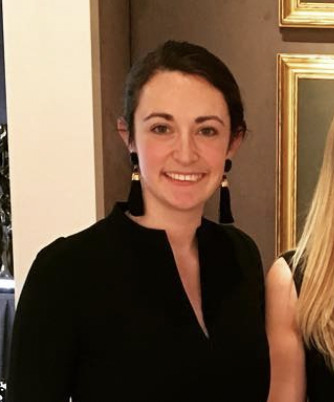
How has your experience at CAA affected you?
Working at CAA has exposed me to the larger community of art historians outside my discipline. Everyone at CAA is building a productive network of professionals, scholars, emerging leaders in the field who are building each other up and sharing resources. I have learned so much about how grants and awards are administered to simultaneously give people more opportunities for their work.
What was something you learned that was unexpected?
I learned that juries make hard decisions and are ultimately trying to celebrate and grant as many projects as possible. Before working at CAA, I had only ever experienced the application process and had not given too much thought to what happens after you click the submit button. Listening to the juries’ debate was illuminating and FUN. The process is complex, intellectual, and ultimately much more nuanced than I previously thought.
What is your favorite kind of art and why?
I love nineteenth-century American landscape painting because it is beautiful, complicated, and speaks to so many important themes and topics within our shared history.
Astrid Tvetenstrand is a fourth year PhD candidate in the American & New England Studies program at Boston University. She studies the history of American painting, decorative arts, and architecture. She explores these fields through practices of collection, economic development, and the consumption of American property. Her dissertation examines late nineteenth-century American landscape painting’s role in the creation of seasonal colonies. By investigating art’s relationship to the development of property, she analyzes the socioeconomic framework which shaped both the visual content and physical market of landscape painting. She looks at the role of nature in the lives of nineteenth-century Americans and how it influenced the creation of art and commerce in the United States.
Black History Month and caa.reviews
posted by CAA — Feb 03, 2022
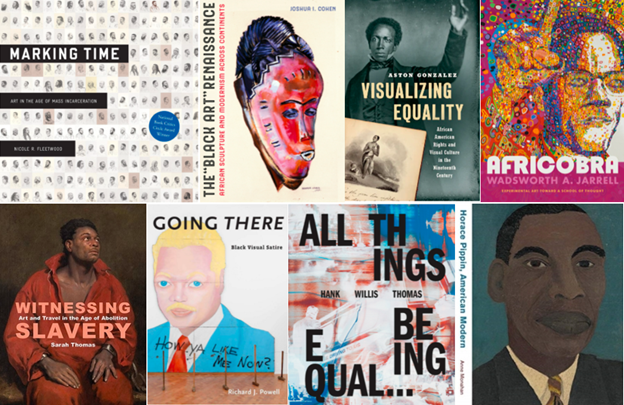
Each week this Black History Month, we highlight the rich scholarship and programs produced at CAA that celebrate, recognize, and interrogate Black art, history, and experience. This week, we are sharing a bibliography of publications and exhibitions reviewed on our online, open-access journal caa.reviews from this past year that addresses these topics.
caa.reviews also houses rosters of dissertation titles in progress and completed since 2002 and many long-form essays that intersect with these themes as well, such as current Editor-in-Chief of Art Journal, Eddie Chambers, essay Reflections on African and African Diaspora Art from 2016.
 Childs, Adienne L. Riffs and Relations: African American Artists and the European Modernist Tradition. Washington, DC and New York: Phillips Collection in association with Rizzoli Electa, 2020.
Childs, Adienne L. Riffs and Relations: African American Artists and the European Modernist Tradition. Washington, DC and New York: Phillips Collection in association with Rizzoli Electa, 2020.
Sanford Biggers, Negerplastik, 2016, repurposed antique quilt, cotton fabric fragments, tar, and glitter, 81 × 76 3/4 in. (205.7 x 195 cm) (photograph by Todd-White Art Photography, provided by Massimo De Carlo, Milan/London/Hong Kong)
 Choi, Connie H., Thelma Golden, and Kellie Jones. Black Refractions: Highlights from the Studio Museum in Harlem. New York: Rizzoli Electa, 2019.
Choi, Connie H., Thelma Golden, and Kellie Jones. Black Refractions: Highlights from the Studio Museum in Harlem. New York: Rizzoli Electa, 2019.
Jordan Casteel, Kevin the Kiteman, 2016, oil on canvas, 78 x 78 in. (198.1 x 198.1 cm). The Studio Museum in Harlem, New York, Museum purchase with funds provided by the Acquisition Committee 2016.37 (artwork © Jordan Casteel; photograph by Adam Reich, provided by American Federation of Arts)
Cohen, Joshua I. The “Black Art” Renaissance: African Sculpture and Modernism across Continents. Oakland: University of California Press, 2020.
David Driskell: Icons of Nature and History. Atlanta and New York: High Museum of Art and Rizzoli Electa, 2021.
David Driskell, Young Pines Growing, 1959, oil on canvas. Clark Atlanta University Art Museum, John Hope Franklin Purchase Award (artwork © Estate of David C. Driskell; photograph provided by High Museum of Art)
 Diouf, Mamadou and Maureen Murphy, editors. Déborder la négritude: Arts, politique et société à Dakar. Dijon. France: Les presses du réel, 2020.
Diouf, Mamadou and Maureen Murphy, editors. Déborder la négritude: Arts, politique et société à Dakar. Dijon. France: Les presses du réel, 2020.
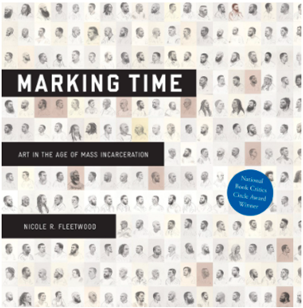 Fleetwood, Nicole R. Marking Time: Art in the Age of Mass Incarceration. Cambridge, MA: Harvard University Press, 2020.
Fleetwood, Nicole R. Marking Time: Art in the Age of Mass Incarceration. Cambridge, MA: Harvard University Press, 2020.
 Gonzalez, Aston. Visualizing Equality: African American Rights and Visual Culture in the Nineteenth Century. John Hope Franklin Series in African American History and Culture. Chapel Hill: University of North Carolina Press, 2020.
Gonzalez, Aston. Visualizing Equality: African American Rights and Visual Culture in the Nineteenth Century. John Hope Franklin Series in African American History and Culture. Chapel Hill: University of North Carolina Press, 2020.
 Hank Willis Thomas: All Things Being Equal . . . New York and Portland, OR: Aperture Foundation in association with Portland Art Museum, 2018.
Hank Willis Thomas: All Things Being Equal . . . New York and Portland, OR: Aperture Foundation in association with Portland Art Museum, 2018.
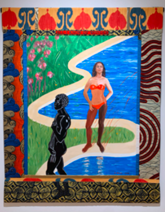 Harris, Shawnya L.,editor. Emma Amos: Color Odyssey. Athens: Georgia Museum of Art, University of Georgia, 2021.
Harris, Shawnya L.,editor. Emma Amos: Color Odyssey. Athens: Georgia Museum of Art, University of Georgia, 2021.
Emma Amos, All I Know of Wonder, 2008, oil on linen, African fabric, 70 1/2 x 55 1/2 in. (179.1 x 141 cm), installation view, Emma Amos: Color Odyssey, Georgia Museum of Art, University of Georgia, Athens, 2021 (photograph by the author)
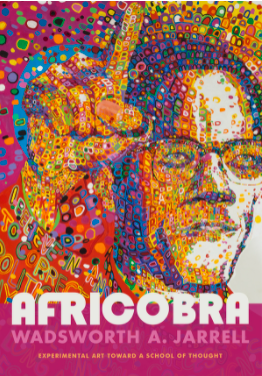 Jarrell, Wadsworth A. AFRICOBRA: Experimental Art toward a School of Thought. Durham, NC: Duke University Press, 2020.
Jarrell, Wadsworth A. AFRICOBRA: Experimental Art toward a School of Thought. Durham, NC: Duke University Press, 2020.
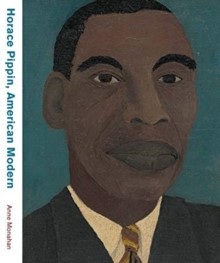 Monahan, Anne. Horace Pippin, American Modern. New Haven, CT: Yale University Press, 2020.
Monahan, Anne. Horace Pippin, American Modern. New Haven, CT: Yale University Press, 2020.
Mühling, Matthias and Stephanie Weber, editors. Senga Nengudi: Topologies. Munich: Hirmer, 2021.
Senga Nengudi, Warp Trance, 2007, multi-channel audio/video installation in collaboration with the Fabric Workshop and Museum, Philadelphia, with a sound composition by Butch Morris, installation view, Senga Nengudi: Topologies, Philadelphia Museum of Art, 2021 (photograph © Aaron Igler, provided by the artist and The Fabric Workshop and Museum)
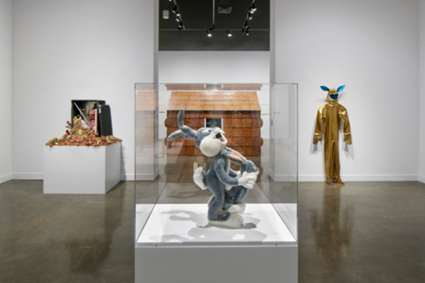 No Wrong Holes: Thirty Years of Nayland Blake. Los Angeles and Cambridge, MA: Institute of Contemporary Art and MIT List Visual Arts Center (online), 2020.
No Wrong Holes: Thirty Years of Nayland Blake. Los Angeles and Cambridge, MA: Institute of Contemporary Art and MIT List Visual Arts Center (online), 2020.
No Wrong Holes: Thirty Years of Nayland Blake, installation view, MIT List Visual Arts Center, Cambridge, MA, 2020–21 (photograph © Charles Mayer, provided by MIT List Visual Arts Center)
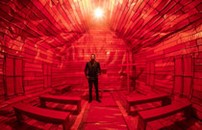 Oliver, Valerie Cassel. The Dirty South: Contemporary Art, Material Culture, and the Sonic Impulse. Richmond, VA and Durham, NC: Virginia Museum of Fine Arts in association with Duke University Press, 2021.
Oliver, Valerie Cassel. The Dirty South: Contemporary Art, Material Culture, and the Sonic Impulse. Richmond, VA and Durham, NC: Virginia Museum of Fine Arts in association with Duke University Press, 2021.
Rodney McMillian, Asterisks in Dockery (Blues for Smoke), 2021, vinyl, thread, wood, paint, lightbulb, installation view, The Dirty South: Contemporary Art, Material Culture, and the Sonic Impulse, Virginia Museum of Fine Arts, 2021 (photograph © Sandra Sellars, provided by Virginia Museum of Fine Arts)
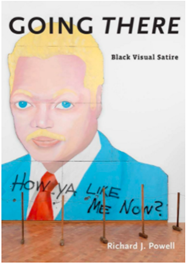 Powell, Richard J. Going There: Black Visual Satire. Cambridge, MA and New Haven, CT: Hutchins Center for African & African American Research in association with Yale University Press, 2020.
Powell, Richard J. Going There: Black Visual Satire. Cambridge, MA and New Haven, CT: Hutchins Center for African & African American Research in association with Yale University Press, 2020.
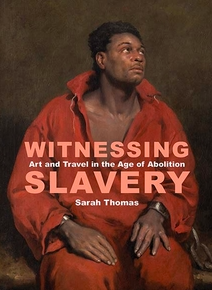 Thomas, Sarah. Witnessing Slavery: Art and Travel in the Age of Abolition. London and New Haven: Paul Mellon Centre for Studies in British Art in association with Yale University Press, 2019.
Thomas, Sarah. Witnessing Slavery: Art and Travel in the Age of Abolition. London and New Haven: Paul Mellon Centre for Studies in British Art in association with Yale University Press, 2019.
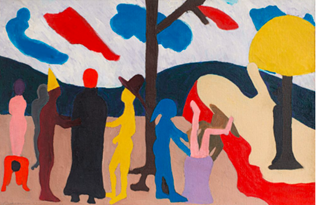 Tuite, Diana, editor. Bob Thompson: This House Is Mine. Waterville, ME and New Haven, CT: Colby College Museum of Art in association with Yale University Press, 2021.
Tuite, Diana, editor. Bob Thompson: This House Is Mine. Waterville, ME and New Haven, CT: Colby College Museum of Art in association with Yale University Press, 2021.
Bob Thompson, The Snook (The Sack), 1961, oil on canvas, 23 1/2 x 36 in. (59.7 x 91.4 cm). Collection of Andrew Nelson (© Michael Rosenfeld Gallery LLC, New York)
VanDiver, Rebecca. Designing a New Tradition: Loïs Mailou Jones and the Aesthetics of Blackness. University Park, PA: Penn State University Press, 2020.
Meet the 2022 CAA Annual Conference Support Grant Recipients
posted by CAA — Feb 03, 2022
CAA offers Annual Conference support grants to graduate students in art history and to international artists and scholars. Meet this year’s recipients of our named support grants and find information about their presentations at the conference and their corresponding session below. Dozens of other support grants were given to CAA members through the Presidents Council of CAA and the “Pay it Forward” initiative.
CAA TRAVEL GRANT IN MEMORY OF ARCHIBALD CASON EDWARDS, SENIOR, AND SARAH STANLEY GORDON EDWARDS
The CAA Support Grant in Memory of Archibald Cason Edwards, Senior, and Sarah Stanley Gordon Edwards was made possible by Mary D. Edwards. The grant supports women who are emerging scholars at either an advanced stage of pursuing a doctoral degree or who have received their PhD within the two years prior to the submission of the application.
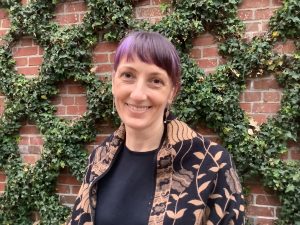
Kristan Hanson, Dumbarton Oaks
Presentation at the Annual Conference: “Nurturing Growth: Eva Gonzalès’s La Plante favorite and Berthe Morisot’s Fillette aux jacinthes”
Session: Enchanted by Nature: Picturing Gendered Plants and Female Agency in Europe and China (17th – 19th Century)
Kristan M. Hanson is an art historian and plant humanist. Her research examines the historical significance of individual plants and botanical forms in art to deepen understandings of human/plant interactions and anthropogenic environmental change. She currently holds a consultancy as Managing Digital Editor for the Plant Humanities Initiative at Dumbarton Oaks, prior to which she was a 2020–2021 academic year fellow. Hanson has also received fellowships and awards to support her research from the Oak Spring Garden Foundation, HASTAC Scholars program, Hall Center for the Humanities, and Institute for Digital Research in the Humanities.
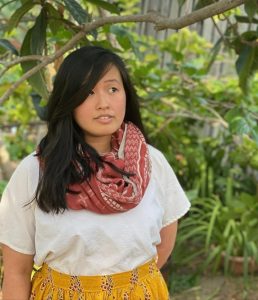
Cynthia Kok, Yale University
Presentation at the Annual Conference: “’Een bloempoth van parlemoer’: Painting Life in Dirck van Rijswijck’s Mother-of-Pearl Floral Panels”
Session: Analogous Matter: Skeuomorphism as Method
Cynthia Kok is a Ph.D. candidate at Yale University. Her dissertation focuses on sensorial engagement in making and craft experiments with mother-of-pearl in the early modern Dutch world. Cynthia received her MA from Bard Graduate Center and her BA from the University of California, Berkeley. She has held curatorial internships at the Metropolitan Museum of Art’s Costume Institute, the Frick Collection, and the Smithsonian American Art Museum and she is the 2021-2023 Kress History of Art Institutional Fellow at the Leiden University Centre for the Arts in Society (LUCAS).
Honorable Mention:
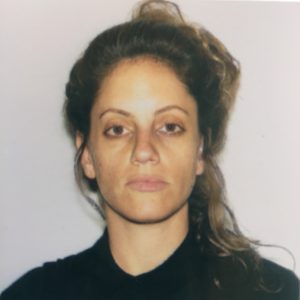
Shoghig Halajian, University of California San Diego
Presentation at the Annual Conference: “Destroying the Form: On the Spatial Politics of Rafa Esparza’s bust: A Mediation on Freedom”
Session: Monumentality in Art: Memory, History, and Impermanence in Diaspora
Shoghig Halajian is a curator and art historian, who serves on the Board of Directors at Human Resources LA and was previously Assistant Director at LACE (Los Angeles Contemporary Exhibitions). She is co-editor of the online journal Georgia, in collaboration with Anthony Carfello and Suzy Halajian, which is supported by a Creative Capital | Andy Warhol Foundation Arts Writers Grant. She has presented projects at the Hammer Museum and the ONE Archives at USC Libraries in Los Angeles; Le Magasin–National Center for Contemporary Art in Grenoble; Al Ma’mal Foundation for Art in Jerusalem, UKS in Oslo, among others. She was a 2021 Research Fellow at Ocean Space–TBA 21 in Venice. She is a Ph.D. candidate in Art History, Theory and Criticism with a Critical Gender Studies emphasis at University of California, San Diego, where her research explores contemporary queer aesthetics and performance through a critical race lens, focusing on artistic experiments with collaboration.
SAMUEL H. KRESS FOUNDATION CAA CONFERENCE SUPPORT FELLOWSHIP FOR INTERNATIONAL SCHOLARS
Recognizing the value of the international exchange of ideas and experience among art historians, the Kress Foundation is offering support for international scholars participating as speakers at the 2022 CAA Annual Conference. The scholarly focus of the papers must be European art before 1830.
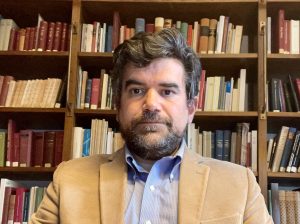
Lorenzo Vigotti, Kunsthistorisches Institut in Florenz
Presentation at the Annual Conference: “Diplomatic Exchanges and Architectural Inventions along the Silk Road: The Case of Soltaniyeh and Santa Maria del Fiore”
Session: Beyond the Silk Road
Lorenzo is a trained architect with a M. Arch. from the University of Florence, Italy, and a Ph.D. in architectural history from Columbia University with a dissertation on the origin of the Renaissance palace. He is currently a post-doc at the Kunsthistorisches Institut in Florence, where he studies the shift in spatial organization in domestic residences between the 14th and the 15th century, with an emphasis on early collecting practices and the birth of the studiolo as a manifestation of power by the urban oligarchy. Together with Shahid Beheshti University in Tehran, Iran, Lorenzo is exploring the circulation of architectural knowledge between medieval Persia and Italy, specifically the materiality and the problems of preservation of brick dome structures. Finally, he oversees the virtual reconstruction of the now lost Florentine ghetto at the Medici Archive Project.
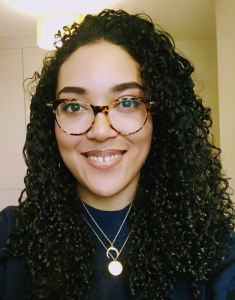
Ana Cristina Howie, University of Cambridge
Presentation at the Annual Conference: “’Favoured Black Attendants’ in ‘Splendid State Portraits’? Genoese merchants, Flemish painters, and the Spanish Atlantic Slave Trade”
Session: Archive, Object, Image: Reading Against the Grain in the Dutch and Spanish “Golden Ages”
Ana is originally from New Zealand and completed her bachelor’s degree in the History of Art and French at the University of Auckland. She continued her studies at the Université Paris-Sorbonne, then earned her MA in the History of Art at the Courtauld Institute in London, specializing in early modern Netherlandish artistic production. She began her PhD under the supervision of Professor Ulinka Rublack at the University of Cambridge in 2019, funded by the Prince of Wales International Scholarship. Her doctoral research investigates the relationships between women, dress, and portraiture in seventeenth-century Genoa, with a focus on the oeuvres of Flemish painters Peter Paul Rubens and Antony van Dyck. She is the recipient of the inaugural Society for Renaissance Studies/British School in Rome Residential Doctoral Research Scholarship for 2021/22. Her work and projects have been supported by the Royal Historical Society, Centre for Research in the Arts, Social Sciences and Humanities, Magdalene College, Cambridge, and the Cambridge Trust.
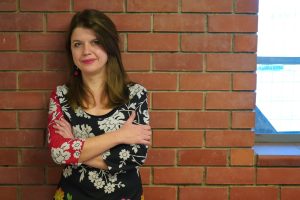
Iro Katsaridou, Museum of Byzantine Culture, Thessaloniki, Greece
Presentation at the Annual Conference: “Through Foreign Eyes: Curating the 1821 Greek War of Independence”
Session: Instrumentalizing Memory and the Politics of Commemoration
Iro Katsaridou was recently (2021) appointed Director of the Thessaloniki Museum of Photography, Greece. Previously, she has worked as curator of modern and contemporary art at the Museum of Byzantine Culture in Thessaloniki. She studied art history at the Aristotle University of Thessaloniki and the Université Paris I-Sorbonne, and also pursued museum studies at the City University of New York. Her doctoral dissertation (Aristotle University, 2010) focused on contemporary Greek photography. Iro has researched photography and art in wartime (World War I and II), curated exhibitions and edited related catalogues in this particular field. More recently (2021) she has curated an exhibition at the Museum of Byzantine Culture on the aspects of Philhellenic movements in art and the Greek War of Independence. She has taught as adjunct faculty at several Greek universities. She has co-edited two books on photography during the Nazi Occupation of Greece (1941-1944), one on the art of World War I in Greece, and written articles and book chapters on photography, museum policies, as well as the relationship between contemporary Greek art and politics. She has presented her research in international conferences, while in 2019 and 2020 she participated in the CAA-Getty International Program.
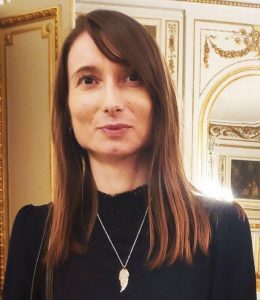
Jana Kantoříková, Sorbonne University/CNRS
Presentation at the Annual Conference: “Crucified Women: The Way of the Cross in the Symbolist Movement”
Session: Women in Art in the second part of the 19th century-early part of the 20th
Jana Kantoříková is an associated researcher at the Center of Interdisciplinary Research on Central, Eastern and Balkanic Europe at Sorbonne University/CNRS. She received her PhD in Slavic Philology, History of Czech Literature and Literary Theory at the Charles University in Prague and the University of Regensburg (2018). She taught at the University of Passau (Germany) and the Sorbonne University. Her research focuses on European modernisms and cultural transfers between France, Germany and the Czech lands, for example “Horror Fragmenti in Czech Symbolism” in Angst, Anxiety, Anguish in Fin de Siècle Art and Literature (Cambridge Scholars Publishing, 2020) or “Le Cycle de la volupté et de la mort : ‘livre empoisonné’ et ornementation du péché” in L’art (décoratif) du livre fin-de-siècle: éloge du parergon (Éditions Otrante, 2021). She is currently working on projects related to the reception of Friedrich Nietzsche in Central Europe and the blackness imagery in the Czech lands in the 19th century.
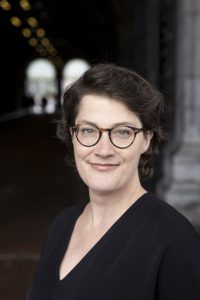
Judith Noorman, University of Amsterdam
Presentation: “The Invisibility Myth. Women, Art and Household Consumption in the Dutch Republic”
Session at the Annual Conference: Archive, Object, Image: Reading Against the Grain in the Dutch and Spanish “Golden Ages”
Judith Noorman is Assistant Professor of Art History in the Early Modern Period and Director of the Amsterdam Centre for Studies in Early Modernity (both at the University of Amsterdam). As of September 2021, she is leading a governmentally funded NWO VIDI project: The Female Impact. Women, Art and Household Consumption in the Dutch Republic, 1580-1720. She earned her PhD at the Institute of Fine Arts, New York University and has conducted postdoctoral research at the Drawing Institute, Morgan Library & Museum. At the 110th CAA Annual Conference, she is presenting a paper on The Invisibility Myth. Women, Art and Household Consumption in the Dutch Republic, as part of the HNA-sponsored session Archive, Object, Image: Reading Against the Grain in the Dutch and Spanish “Golden Ages”, which is chaired by Carrie J. Anderson and Marsely Kehoe.
CAA-GETTY INTERNATIONAL PROGRAM
Every year since 2012, the CAA-Getty International Program has enabled art historians, museum curators, and artists who teach art history to attend CAA’s Annual Conference. This program is funded on an annual basis by the Getty Foundation. Meet the CAA-Getty International Program participants here.
Black History Month and the 110th Annual Conference
posted by CAA — Jan 31, 2022
Each week this Black History Month, we highlight the rich scholarship and programs produced at CAA that celebrate, recognize, and interrogate Black art, history, and experience. This week, we look forward to the research and scholarship that will be presented virtually at the upcoming Annual Conference. Many sessions feature talks that look at or investigate Blackness, racism, colonialism, neo-colonialism, and slavery, Black identity, theory of race, Afrofuturism, queerness, the African diaspora, and intersections between these topics.
In chronological order:
February 17-19:
Reimagining the Past alongside Black Women Artists, Thursday, February 17, 2022, 9:00 – 10:30 a.m. CST (10:00 – 11:30 a.m. EST)
Latinx Bodies: Presence/absence and representation (Part 1) , Thursday, February 17, 2022, 9:00 – 10:30 a.m. CST (10:00 – 11:30 a.m. EST)
To See, to Keep, to Know: Photography and Intergenerational Knowledge Production, Thursday, February 17, 2022, 11:00 – 12:30 p.m. CST (12:00 – 1:30 p.m. EST)
Archive, Object, Image: Reading Against the Grain in the Dutch and Spanish “Golden Ages,” , Thursday, February 17, 2022, 11:00 – 12:30 p.m. CST (12:00 – 1:30 p.m. EST)
U.S. Latinx Art, Pre-1950 ,Thursday, February 17, 2022, 11:00 – 12:30 p.m. CST (12:00 – 1:30 p.m. EST)
Latinx Bodies: Presence/Absence and Representation (Part 2) , Thursday, February 17, 2022, 2:30 – 4:00 p.m. CST (3:30 – 5:00 p.m. EST)
Haunting and Memory in Arts of Africa and the African Diaspora , Friday, February 18, 2022, 9:00 – 10:30 a.m. CST (10:00 – 11:30 a.m. EST)
The air we breathe: aesthetics and politics of the breath in transpacific and transatlantic visual cultures ,Friday, February 18, 2022, 9:00 – 10:30 a.m. CST (10:00 – 11:30 a.m. EST)
Flipping the Script , Friday, February 18, 2022, 2:30 – 4:00 p.m. CST (3:30 – 5:00 p.m. EST)
(re)activation of Exhibitions as sites of contestation, Friday, February 18, 2022, 4:30 – 6:00 p.m. CST (5:30 – 7:00 p.m. EST)
Decolonial Teaching Methodologies in Digital Arts & Design, Saturday, February 19, 2022, 9:00 – 10:30 a.m. CST (10:00 – 11:30 a.m. EST)
What’s the “matter” with American Sculpture?, Saturday, February 19, 2022, 9:00 – 10:30 a.m. CST (10:00 – 11:30 a.m. EST)
Signs o’ the Times: Music and Politics in Contemporary Art ,Saturday, February 19, 2022, 9:00 – 10:30 a.m. CST (10:00 – 11:30 a.m. EST)
The Price of Blackness: African American art and visual culture in the first two decades of the Twenty-First Century, Saturday, February 19, 2022, 11:00 – 12:30 p.m. CST (11:00 – 12:30 p.m. EST)
Knowing People: Black Practices in Queer Collaborations, Saturday, February 19, 2022, 2:30 – 4:00 p.m. CST (3:30 – 5:00 p.m. EST)
‘Heresies’ and Other Mythologies, Saturday, February 19, 2022, 2:30 – 4:00 p.m. CST (3:30 – 5:00 p.m. EST)
Signs o’ the Times: Music and Politics in Contemporary Art, Part II ,Saturday, February 19, 2022, 2:30 – 4:00 p.m. CST (3:30 – 5:00 p.m. EST)
Toward an Inclusive Methodology: Experiments in Art Writing,Saturday, February 19, 2022, 4:30 – 6:00 p.m. CST (5:30 – 7:00 p.m. EST)
March 3-5
Women in Architecture: The African Exchange,Thursday, March 3, 2022, 9:00 – 10:30 a.m. CST (10:00 – 11:30 a.m. EST)
The Promise of Modern Art and Design: Cold War-Era Art and Diplomacy,Thursday, March 3, 2022, 9:00 – 10:30 a.m. CST (10:00 – 11:30 a.m. EST)
DESIGN INCUBATION COLLOQUIUM 8.2: RECENT RESEARCH IN COMMUNICATION DESIGN , Thursday, March 3, 2022,9:00 – 10:30 a.m. CST (10:00 – 11:30 a.m. EST)
Blackness and the Ashcan School, Thursday, March 3, 2022, 2:30 – 4:00 p.m. CST (3:30 – 5:00 p.m. EST)
Carnival in Africa, Friday, March 4, 2022, 9:00 – 10:30 a.m. CST (10:00 – 11:30 a.m. EST)
Curatorial Care: Feminist and Queer Practices ,Friday, March 4, 2022,9:00 – 10:30 a.m. CST (10:00 – 11:30 a.m. EST
Reading Kerry James Marshall’s ‘Rythm Mastr’, Friday, March 4, 2022, 11:00 – 12:30 p.m. CST (12:00 – 1:30 p.m. EST)
Transnational, Transcultural, Transversal: On the Decolonial Discourse of Art,Friday, March 4, 2022, 11:00 – 12:30 p.m. CST (12:00 – 1:30 p.m. EST)
Black Collage, Friday, March 4, 2022, 2:30 – 4:00 p.m. CST (3:30 – 5:00 p.m. EST)
Abolitionist Aesthetics, Friday, March 4, 2022, 4:30 – 6:00 p.m. CST (5:30 – 7:00 p.m. EST)
Art History and Social Justice in Practice ,Friday, March 4, 2022,4:30 – 6:00 p.m. CST (5:30 – 7:00 p.m. EST)
Activist Exhibitions, Friday, March 4, 2022, 4:30 – 6:00 p.m. CST (5:30 – 7:00 p.m. EST)
On Afro-pessimism and Its Alternatives ,Saturday, March 5, 2022, 9:00 – 10:30 a.m. CST (10:00 – 11:30 a.m. EST)
Reconsidering Art History Through Access ,Saturday, March 5, 2022, 9:00 – 10:30 a.m. CST (10:00 – 11:30 a.m. EST)
New Perspectives in Art, Design, and Art History: Supporting and Showcasing Emerging Voices from Marginalized Communities ,Saturday, March 5, 2022, 2:30 – 4:00 p.m. CST (3:30 – 5:00 p.m. EST)
New Ways of Seeing ,Saturday, March 5, 2022, 2:30 – 4:00 p.m. CST (3:30 – 5:00 p.m. EST)
Botanical Intimacies: Colonialism, Decolonial Practice, and Queered Ecologies , Saturday, March 5, 2022,4:30 – 6:00 p.m. CST (5:30 – 7:00 p.m. EST)
CAA 2022 Awards for Distinction
posted by CAA — Jan 24, 2022
CAA announces the 2022 recipients of Awards for Distinction. By honoring outstanding member achievements, CAA reaffirms its mission to encourage the highest standards of scholarship, practice, connoisseurship, and teaching in the arts. With these annual awards, CAA seeks to honor individual artists, art historians, authors, museum professionals, and critics whose accomplishments transcend their individual disciplines and contribute to the profession as a whole and to the world at large.
Among the awards, the Distinguished Artist Award for Lifetime Achievement is presented to Betye Saar who has not only forged a singular practice for six decades but has also influenced generations of artists, makers, and thinkers. Calling upon the legacies of artists like Joseph Cornell, her symbolic and potent assemblages, of which she’s best known, reflect on the lives, experiences, and identities of African Americans, spirituality, and cultural connectivity.
The Distinguished Lifetime Achievement Award for Writing on Art is presented to Wu Hung. Perpetually interested in the shape of time, in relation to the time of the world, he has authored many books, essays, and exhibition catalogues that bring Chinese visual culture into different orders of focus, taking into account the changing conditions of tombs, screens, performances, and protests. The scope of his work has an epic quality, allowing arguments to unfold across centuries without losing sight of the very human presence of artists and audiences.
Art Journal Award
Alfred H. Barr Jr. Award
Alfred H. Barr Jr. Award for Smaller Museums, Libraries, Collections, and Exhibitions
Frank Jewett Mather Award
Charles Rufus Morey Book Award
Elina Gertsman, The Absent Image: Lacunae in Medieval Books, Penn State University Press, 2021.
Arthur Kingsley Porter Prize
Artist Award for a Distinguished Body of Work
Kent Monkman
CAA/AIC Award for Distinction in Scholarship and Conservation
Zahira Véliz
Distinguished Artist Award for Lifetime Achievement
Betye Saar
Distinguished Lifetime Achievement Award for Writing on Art
Wu Hung
Distinguished Feminist Award – Artist
In lieu of the Distinguished Feminist awards, we will recognize leaders in the field of feminist art and art history in our 2022 programming highlighting the 50th Year Anniversary of feminism at CAA.
Distinguished Feminist Award – Scholar
In lieu of the Distinguished Feminist awards, we will recognize leaders in the field of feminist art and art history in our 2022 programming highlighting the 50th Year Anniversary of feminism at CAA.
Distinguished Teaching of Art Award
Fred Hagstrom
Distinguished Teaching of Art History Award
Terry Smith
Excellence in Diversity Award
Citations:
Art Journal Award
In organizing a course of study predicated on the ontological challenge to discourses of art offered by trans and nonbinary positions, David J. Getsy and Che Gossett have generously identified a major lacuna in the field and provided a toolkit for its amelioration. The jury unanimously selected their “A Syllabus on Transgender and Nonbinary Methods for Art and Art History” as the most distinguished contribution to the Art Journal in 2021. The syllabus not only identifies, positions, and summarizes critical scholarship in the field of transgender and nonbinary studies, it also demonstrates the fruitful integration of pedagogy and emerging research methodologies. Noting the relative dearth of art historical scholarship that has taken up trans methods and histories, the authors suggest the ways in which key themes and terms from art might be critically reevaluated in light of transgender studies. An introduction to each section’s bibliography synthesizes complex debates and individual arguments with remarkable clarity. Sensitive to the necessary intersections of trans analytics with critical approaches to race, ability, and class, the authors highlight readings from Black feminist thought and abolition optics, among other transversal concerns, that elucidate points of fracture within and strategies of resistance to the regulatory gender binary. At once rigorous and accessible, Getsy and Gossett’s contribution offers an adaptable blueprint for researchers and educators.
Committee:
Omar Kholeif, Sharjah Art Foundation
Tilo Riefenstein, School of the Arts, York St John University
Phil Taylor, George Eastman Museum (Chair)
Alfred H. Barr Jr. Award
America is haunted. Genocidal policies unleashed on Native Americans; the horror of the transatlantic slave trade; war, racism, and social injustice; dark passages in community and individual histories – these traumas and more have left behind a trail of spirits. Taking as its topic the paranormal in American art, Supernatural America reveals the myriad ways in which citizens and artists have sought to see, understand, or come to terms with the ghosts of the past. Lavishly illustrated, with many images never seen before, Supernatural America breaks new ground in presenting the paranormal as a historical subject of wide-ranging importance. Incisive essays by scholars and artists cover painting and sculpture from the late 18th century to the present, spirit photography, art channeled through mediums, spiritualist paraphernalia, folk and outsider art, UFO-inspired materials, video and installation from a range of perspectives. This revealing, thought-provoking investigation into an emerging scholarly field gives proof to William Faulkner’s well-known line: ‘The past is never dead. It’s not even past’.
Committee:
Susan Aberth, Bard College
Benjamin Anderson, Cornell
Karen Lang, University of Arizona
Andrew Saluti, Syracuse University (Chair)
Joyce Tsai, Clyfford Still Museum
Alfred H. Barr Jr. Award for Smaller Museums, Libraries, Collections, and Exhibitions
In 2015 the Ryerson Image Centre acquired the archives of Berenice Abbott, including more than 6000 photographs and 7000 negatives, her papers, correspondences, and manuscripts. One of the key figures in the history of documentary photography, Abbott is now known as an archivist as well as an artist. It was Abbott who preserved Eugene Atget’s archives at the end of the twenties and published his work. Her own photographs, taken while working for the WPA, consolidated her reputation as a documentary photographer. What exactly is that reputation? In order to answer that question, Documentary in Dispute meticulously reconstructs the manuscript of the book Changing New York, first published in 1939 by Dutton & Co, with photographs by Berenice Abbott and text by renowned art critic Elizabeth McCausland. In a tour de force of archival research and scholarly presentation, Sarah M. Miller reveals how the project was altered to obscure the aesthetic, political and ethical values of photographer and author. Miller’s beautifully written, highly focused essay on Abbott and McCausland situates them in an international avant-garde which recognized the potential of image and text to transform, even to break, our habits of seeing and being. Miller’s overall approach recalls Walter Benjamin’s own in the 1930s. Not coincidentally, Benjamin was inspired by Abbott’s archival and photographic achievements.
Committee:
Susan Aberth, Bard College
Benjamin Anderson, Cornell
Karen Lang, University of Arizona
Andrew Saluti, Syracuse University (Chair)
Joyce Tsai, Clyfford Still Museum
Frank Jewett Mather Award
The jury has unanimously selected Kaira M. Cabañas’ Immanent Vitalities: Meaning and Materiality in Modern and Contemporary Art. Cabañas has written a highly readable volume addressing the material relations between objects and subjects as well as addressing the limiting institutional conventions of academic art history. Her work draws upon theories of new materialism, an animating force that, when attended to, requires rethinking binary categories such as living and inert or life and matter. Cabañas’ volume traverses histories and hemispheres: from the perceptual doubts engendered by the force of color in Alejandro Otero’s paintings to the enmeshed material contingencies of Gego’s metal sculptures, from the sensorial therapeutic propositions of Lygia Clark’s relational objects to the curatorial entanglements of Alessandro Balteo-Yazbeck’s challenges to the grid, and from the affective agencies Mario Pedrosa located in the paintings of Djanira da Motta e Silva to the documented rituals of care obfuscating boundaries between the organic and the inorganic in Matheus Rocha Pitta’s Polaroids. Cabañas proposes an alternative to the kind of nation-bounded analyses that often burden studies of modern and contemporary art of Latin America. She addresses academic art history’s tendency to isolate along geographic lines, marginalizing practices and scholarship. Cabañas’ text thus models a critical strategy for assessing not just artworks but the field itself.
Committee:
Julia Bryan-Wilson, University of California, Berkeley
Kim Theriault, Dominican University
Andrew Wasserman, Dominican University (Chair)
Charles Rufus Morey Book Award
Elina Gertsman, The Absent Image: Lacunae in Medieval Books, Penn State University Press, 2021.
Countering the customary interpretation of late medieval art as relentlessly profuse and exuberant, Elina Gertsman’s The Absent Image: Lacunae in Medieval Books, explores different constructions of emptiness ranging from the presentation of voids in illustrations to represent the unrepresentable to the deliberate inclusion of physical holes in manuscript pages designed to reveal portions of other pages. Gertsman’s investigation of the “fecundity of emptiness” is a generative and compelling topic for scholars of art history/visual studies across areas, both within and outside Medieval Studies. She argues and demonstrates that, between 1200s and 1500s, the broad circulation of scientific thought and its engagement with theology and formal and literary discourses on emptiness, absence, and negation account for visual, cognitive, and material expressions on the pages of medieval books. Cross-disciplinary in its approach, Gertsman’s book simultaneously draws attention to the visual and material aspects of the manuscripts, phenomenological experience, and philosophical, religious, and scientific theories of the period. In doing so she uncovers an unexpected kinship between the medieval artists and the modernist avant-garde, where the void is regarded as the locus of the sublime and of boundless possibility. Her erudite writing and compelling approach to the subject poses questions throughout that magnify the relevance of her study and stimulate personal inquiry—as a reader reflects on other areas of consideration across time called out in the text. The book is lavishly illustrated and artfully designed with a shape and size complementary to the subject of study.
Committee:
John Cunnally, Iowa State University
Christina Hellmich, Fine Arts Museums of San Francisco
Laura Anne Kalba, University of Minnesota
Lisa D. Schrenk, University of Arizona
Dorothy Wong, University of Virginia (Chair)
Arthur Kingsley Porter Prize
Marius Hauknes offers a riveting and multi-layered interpretation of the role of spectatorship in the production of meaning in the 13th-century crypt of the Anagni Cathedral. Rather than consider a viewer as a passive onlooker, he devotes attention to multiple aspects of embodied spectatorship: movement, (shifting) angles/perspectives, (in)visibility, temporality, and knowledge. These offer a powerful vantage point from which to consider the intersection of the painting program with the body itself. Drawing attention to contemporary concerns and interests in the body’s health, its cognitive capacities (and limits), and its place in the universe, Hauknes places the paintings into conversation with medicine and astrology. The images emerge as intellectual acts in a religious and political setting that grappled with problems of temporality and being. Hauknes evinces deep and extensive scholarly research, and is able to draw precise and appropriate insights from contemporary cultural and historical contexts, without losing focus on the artwork itself. While offering compelling readings of specific scenes — showing how they could connect, overlap, or echo with one another — Hauknes posits that comprehensive spectatorship was not possible. Instead, human comprehension and temporality contrasts with the divine, creating a space for reflection on the need for medicine and astrology.
Committee:
Nathan T. Arrington, Princeton University (Chair)
Susanna Berger, University of Southern California
Rachel Miller, California State University, Sacramento
Artist Award for a Distinguished Body of Work
Kent Monkman
There is a long-standing history in the visual arts of artists bearing witness to atrocities: Goya’s painting “The Third of May,” Picasso’s “Guernica,” to name but two. Toronto-based Cree artist Kent Monkman’s exhibition “Shame and Prejudice: A Story of Resilience” follows this tradition, with a few notable updates. On the occasion of Canada’s 150th anniversary in 2017, Monkman’s paintings featured in a cross-country touring exhibit that culminated at the University of British Columbia’s Museum of Anthropology, August 6, 2020 – January 3, 2021, provides a searing critique of Canada’s colonial policies past and present, including, in the artist’s accounting: “the signing of the numbered treaties, the reserve system, genocidal policies of the residential schools, mass incarceration and urban squalor.” This is a body of work that, though tackling a grim subject matter, is often a blend of subversive humor, fantasy, and homoeroticism. And, although appropriating the form of Western history painting, Monkman’s artwork breaks from tradition by subverting and de-centering the Western gaze and re-presenting a perspective of history from the vantage point of the Indigenous peoples. Albeit, a history filtered through the particular lens of an artist who identifies as both queer and two-spirit, and through his trickster alter-ego, Miss Chief Share Eagle Testickle, the protagonist within much of Monkman’s paintings and performances. Through his use of history painting, Monkman’s project is one that reminds us of the potency of images, and the potential of the artist to provoke and challenge history and its representations.
Committee:
Stephen Fakiyesi, Independent Artist, Toronto
Jessica Hong, Hood Museum, Toledo Art Museum
Beauvais Lyons, University of Tennessee, Knoxville, (Chair)
CAA/AIC Award for Distinction in Scholarship and Conservation
Zahira Véliz
Zahria (Soni) Véliz has enhanced our understanding of art through her numerous, scholarly publications to the fields of art history and paintings conservation. Dr. Véliz has strengthened the methodological approaches of scholars who work on Spanish artists and Franz Kline through her publication record as well as her generosity as a colleague.
Through the translation and dissemination of Spanish texts, Dr. Véliz’s has made contemporaneous information about early modern painting accessible to researchers who do not read Spanish. Artists Techniques in Golden Age Spain (1987) is often cited in technical studies of Spanish paintings. More recently, Dr. Véliz edited a translation of Jusepe Martínez’s 1673-75 Practical Discourses on the Most Noble Art of Painting (2017). These publications, along with others by Dr. Véliz on subjects including blue pigments, wooden panels, and drawing practice, have been foundational to the study of Spanish art in the United States.
Dr. Véliz’s PhD dissertation on Alonso Cano served as a foundation for many publications on the artist. In addition, Dr. Véliz’s knowledge and skills of connoisseurship regarding Spanish drawing enriched her drawings catalogues for the Courtauld Institute of Art in London and the Museo de Bellas Artes in Asturias. As Senior Paintings Conservator for the Museum of Fine Arts, Houston, Dr. Véliz published her research into a newly attributed painting to Diego Velázquez as well as technical and art historical research on Franz Kline’s paintings that are models of collaborative research.
Committee Members:
Jim Coddington, American Institute of Conservation
Tiarna Doherty, University of Delaware, (Chair)
Fernanda Valverde, Amon Carter Museum
Distinguished Artist Award for Lifetime Achievement
Betye Saar
Betye Saar (b. 1926, Los Angeles, CA) has not only forged a singular practice for six decades but has also influenced generations of artists, makers, and thinkers. Calling upon the legacies of artists like Joseph Cornell, her symbolic and potent assemblages, of which she’s best known, reflect on the lives, experiences, and identities of African Americans, spirituality, and cultural connectivity. Part of the broader Black Arts Movement in the 1970s, Saar also confronted issues of racism and sexism in groundbreaking and radical works like The Liberation of Aunt Jemima (1972). Saar contends the continual thread in her work is her “curiosity about the mystical.” As she wrote in 1998, “I am intrigued with combining the remnant of memories, fragments of relics and ordinary objects, with the components of technology. It’s a way of delving into the past and reaching into the future simultaneously. The art itself becomes the bridge. Curiosity about the unknown has no boundaries. Symbols, images, place and cultures merge. Time slips away. The stars, the cards, the mystic vigil may hold the answers. By shifting the point of view an inner spirit is released. Free to create.” By foregrounding the mystical, Saar sees people, cultures, contexts, temporalities as part of a larger, interconnected spiritual fabric, an understanding that is needed in a time of extreme ideological polarization, inequities, and geopolitical strife. Saar and her practice continue to resonate and inspire current generations and those to come.
Committee:
Stephen Fakiyesi, Independent Artist, Toronto
Jessica Hong, Hood Museum, Toledo Art Museum
Beauvais Lyons, University of Tennessee, Knoxville, (Chair)
Distinguished Lifetime Achievement Award for Writing on Art
Wu Hung
Trained in both China and the United States, Wu Hung’s writing brings perspectives native to both cultures to bear on aesthetics, art history, and archaeology. His arguments ground the cultures of China, from the earliest ancient survivals to the interventions of our own time in structures of mind that defy the progress narratives of the West. He has received countless awards for work that has transformed the study of East Asian art and drawn attention to the relationship between images and the spaces within which they are observed, from the Dunhuang caves to the double screens to Zhu Jinshi’s Fangzhen: A Cubic Meter of Canvas in Berlin.
Overall, his writings explore the many, restless transitions across time and space. Perpetually interested in the shape of time, in relation to the time of the world, he has authored many books, essays, and exhibition catalogues that bring Chinese visual culture into different orders of focus, taking into account the changing conditions of tombs, screens, performances, and protests. The scope of his work has an epic quality, allowing arguments to unfold across centuries without losing sight of the very human presence of artists and audiences. He works in the discipline of art history as a poet-scholar who knows the brushstroke from the inside out, crafting prose of great clarity and nuance that opens the field to specialists and new readers alike.
Distinguished Feminist Award – Artist
In lieu of the Distinguished Feminist awards, we will recognize leaders in the field of feminist art and art history in our 2022 programming highlighting the 50th Year Anniversary of feminism at CAA.
Committee:
Robin Cass, Rochester Institute of Technology (Chair)
Delinda J. Collier, School of the Art Institute of Chicago
Midori Yoshimoto, New Jersey City University
Distinguished Feminist Award – Scholar
In lieu of the Distinguished Feminist awards, we will recognize leaders in the field of feminist art and art history in our 2022 programming highlighting the 50th Year Anniversary of feminism at CAA.
Committee:
Robin Cass, Rochester Institute of Technology (Chair)
Delinda J. Collier, School of the Art Institute of Chicago
Midori Yoshimoto, New Jersey City University
Distinguished Teaching of Art Award
Fred Hagstrom
Fred Hagstrom, a member of the Carleton College faculty since 1984, is the 2022 recipient of the CAA Distinguished Teaching of Art Award. Hagstrom’s nomination included endorsements from former students and colleagues, including a listing of 341 former students who have taken his printmaking, book arts, and drawing classes. Hagstrom also directed a bi-annual study abroad 10-week trip for students to Australia, New Zealand, and the Cook Islands twelve times over twenty years, where students learned about South Pacific and Maori art and culture. Based on this experience, Dylan Yvonne Welch (BA, ‘08) recalls “Each trip, he candidly and humbly facilitates conversations about colonial history, racism and art. As a student, this was a breath of fresh air as I had found that many other professors seemed uncomfortable or simply avoided discussing those topics.” Eleanor Jensen (BA, ’01) credit him with teaching her to both see and draw, while also observing that “Fred is deeply sensitive to his students and is always ready to stand up for somebody who has been harmed or overlooked.” Students observed that Hagstrom’s classes were interdisciplinary, challenging them to connect their studies in other disciplines as well as their life stories to their studio work. Jade Hoyer credits Professor Hagstrom with being a mentor long after she graduated in 2007. Fred Hagstrom has profoundly impacted his students, many of whom have pursued careers as artists and educators. We are pleased to recognize Fred Hagstrom’s more than three decades of teaching with this award.
Committee:
Stephen Fakiyesi, Independent Artist, Toronto
Jessica Hong, Hood Museum, Toledo Art Museum
Beauvais Lyons, University of Tennessee, Knoxville, (Chair)
Distinguished Teaching of Art History Award
Terry Smith
Terry Smith has long written, curated and taught across borders, in the beginning coming from Australia to study and work in New York as both a scholar and an active member of Art & Language. He has been expanding his sights ever since. He has long advocated for the study of indigenous art. For the past twenty years, starting with projects such as Global Conceptualism: Points of Origin, 1950s -1980s at the Queens Museum, he was the trusted collaborator of Okwui Enwezor. He has always insisted that the past and the present be given their due consideration and global perspectives.
All of this came to his teaching. Students have understood the breadth of his expertise and curiosity; they have used them as inspiration for their own paths; they have appreciated his warmth, his encouragement and the gift of his time. The example he has set as an art historian and a curator has had visible effects in the ranks of university professors and museum curators in the United States and abroad. They do not conform to a single, theoretical way. His students repeatedly speak of his belief in the independent existence of the art object and at the same time his insistence that it be grounded and imbricated in its own real time social relations. Art is allowed its scale, its interior place in our minds, and its exterior place in our world.
Committee:
Shirin Fozi, University of Pittsburgh (Chair)
Joseph Masheck, Hofstra University
Molly Nesbit, Vassar College
Excellence in Diversity Award
Committee:
Carmelita Higgenbotham, Virginia Commonwealth University
Kelly Murdoch-Kitt, University of Michigan
Sohl Lee, Stony Brook University
In Memoriam: Jonathan Brown
posted by CAA — Jan 19, 2022
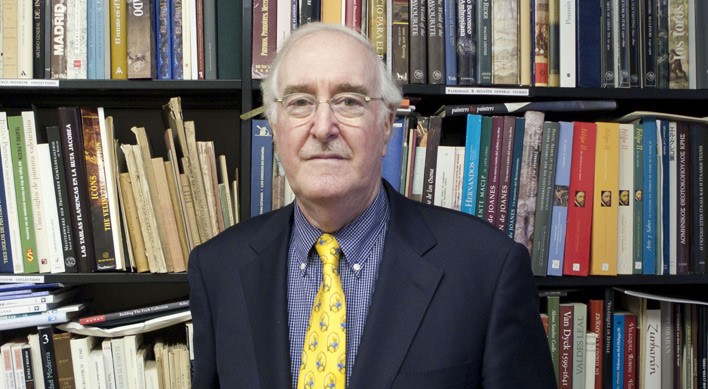
Image source: Institute of Fine Arts, New York University
CAA mourns the loss of Jonathan Brown, an art historian and curator who has had an immense impact on the study of art in the Hispanic world. With over fifty-one years of teaching, eight at Princeton and forty-three at the Institute of Fine Arts (IFA), Brown’s influence was far-reaching. As he put it, “Without modesty, I believe I have made a mark in my field—Hispanic art—and in the wider world of art history.”
As a student at the beginning of his career, Brown studied Spanish literature at Dartmouth College and studied abroad in Madrid, where he discovered and cultivated his lifelong interest in Velázquez and Spanish Baroque art. After finishing his doctorate at Princeton in 1964, he joined the Princeton Department of Art and Archeology from 1965–73 and then ultimately decided to pursue scholarship and teaching, publishing his first book in 1973 based on his dissertation, Images and Ideas in Seventeenth-Century Spanish Painting. He said that he was told “that it fell like a bombshell in the ranks of Spanish art historians. Implicitly, the book created a bridge between the iconographical approach of Panofsky and a contextual reading . . . ” This was just the start of a long career that included exhibitions at major museums, scholarly publications, awards, and other accomplishments. In his tenure, his work shaped the study of Spanish Baroque art and defined the practice of Velázquez, producing texts and surveys that have become standard references for the field. In the last decades of his life, as the Carroll and Milton Petrie Professor Emeritus of Fine Arts at the IFA, he expanded his practice to include Hispanic and colonial art in the Americas.
In 2011, Brown served as the Distinguished Scholar for CAA’s Annual Conference. This honor invites preeminent scholars in the field to participate in a session at the conference along colleagues and former students. The session can therefore be viewed as the equivalent of a living Festschrift: an occasion for applauding, examining, and extending a distinguished career in art history and an opportunity for encouraging dialogue between and among several generations of scholars. In recognizing the significance of this moment, he said that he had “received many awards for my contributions to the field, of which the most important is the Distinguished Scholar by the College Art Association . . .”
Read more about the remarkable career of Jonathan Brown here.



